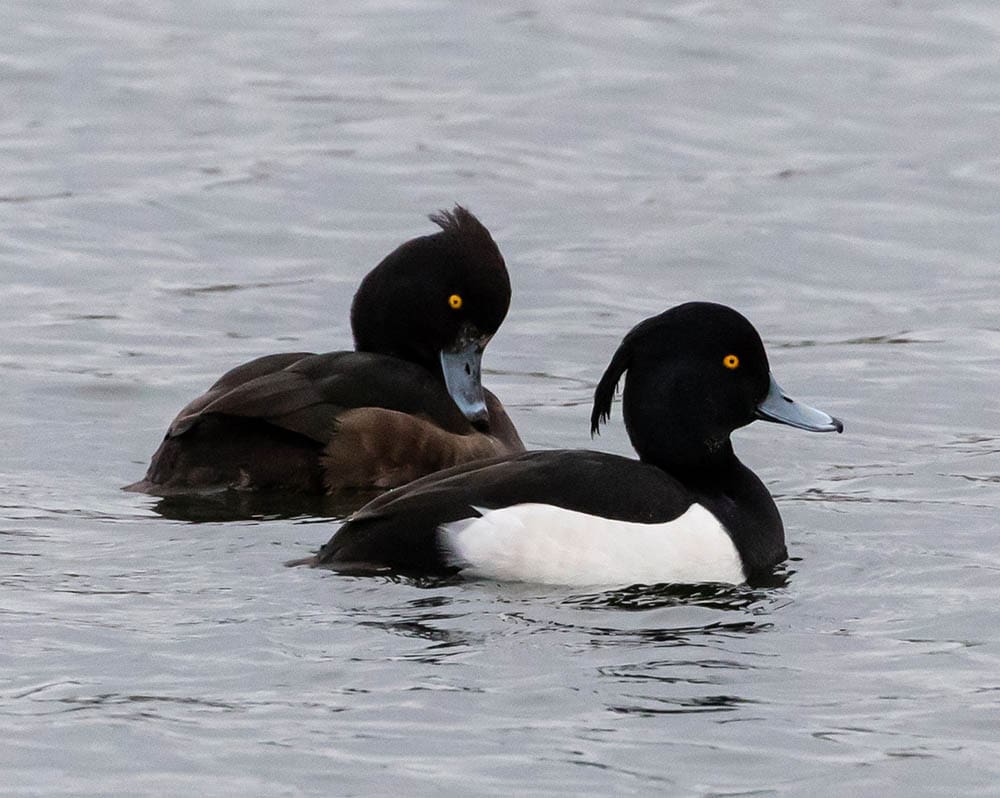[jump-links title=”Click to Skip Ahead”] Domestic Ducks
Wild Ducks
[/jump-links]
Whether you just really like learning about ducks or you’re looking for a new duck breed to add to your farm, we’ve got you covered with the complete list of duck breeds. This list includes domesticated and wild ducks, so there are quite a few to get through. Let’s dive in!

The 114 Most Common Duck Breeds
Domestic Ducks
1. Abacot Ranger
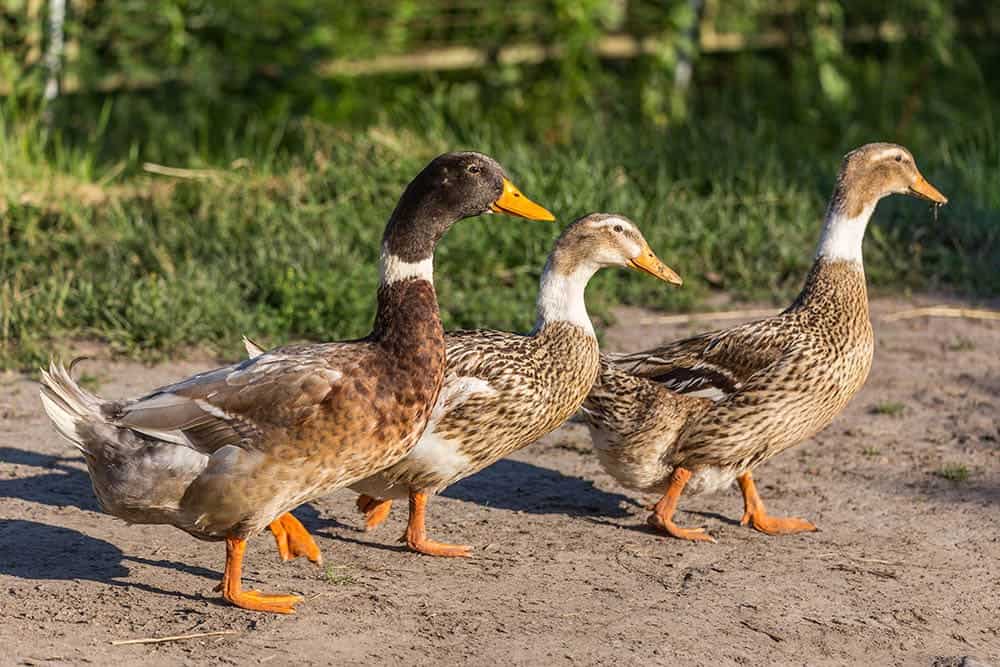
Also called Streicherente (German for “Ranger Duck”) or the Hooded Ranger, the Abacot is a utility breed that is popular for its egg production and exhibition. This breed was developed in the United Kingdom by Mr. Oscar Gray somewhere between 1917 and 1922.
2. American Pekin
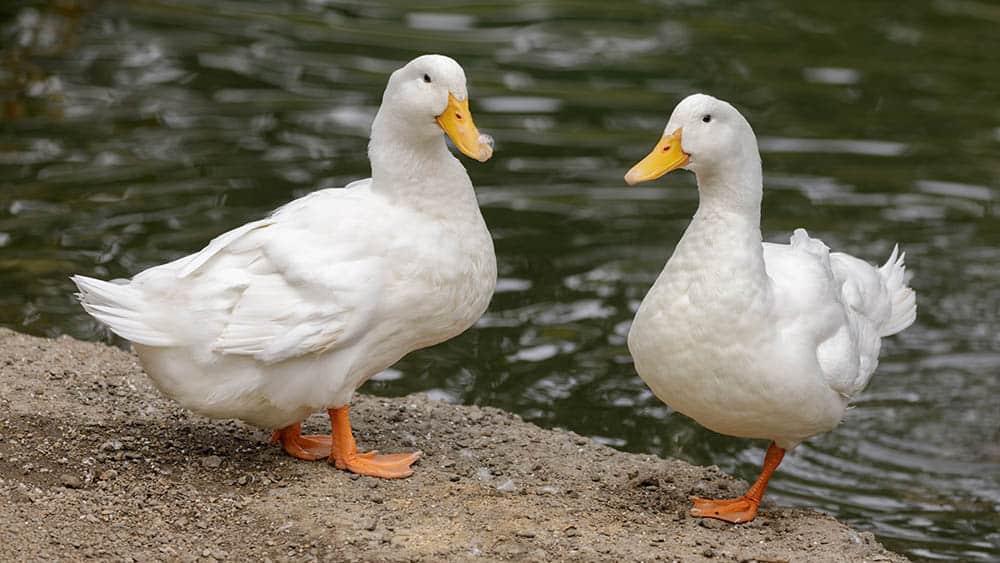
The American Pekin is one of the most popular duck breeds in the U.S. Their sweet and gentle natures also make them excellent pets. Also known as the White Pekin or just Pekin, this duck breed came to the U.S. from China in the 19th century. They are raised almost entirely for their meat, though they may lay around 150 eggs a year.
3. Ancona Duck
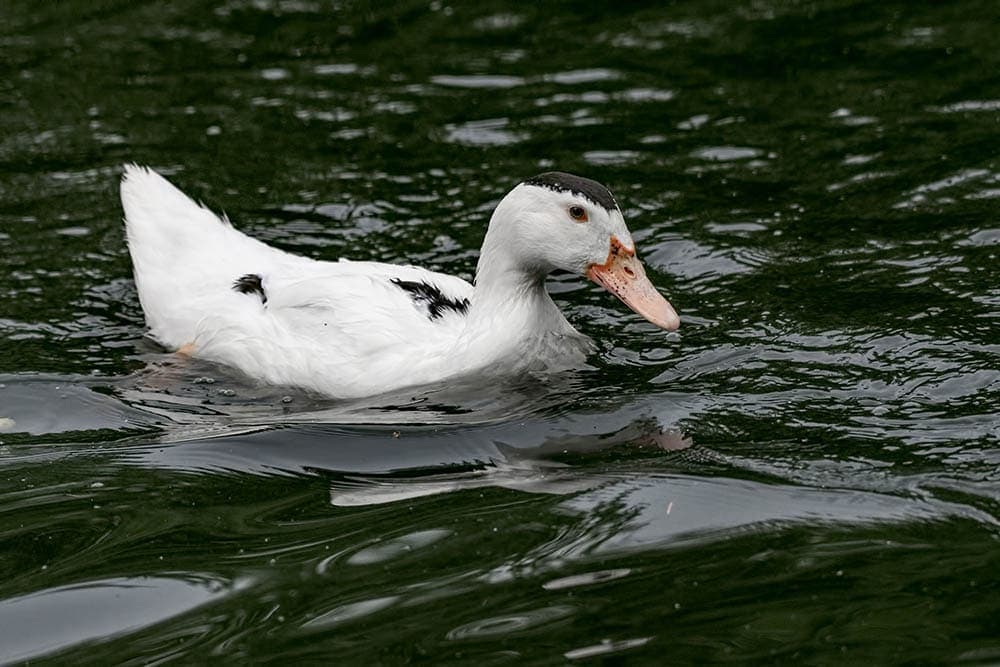
Hailing from Great Britain and developed in the early 20th century, the Ancona Duck is a dual-purpose duck used for its meat and eggs. They also make good “watchdogs”!
4. Australian Call Duck
As the name suggests, this duck breed comes from Australia. They are a rather vocal breed (hence, the “call” in their name) but are easy to maintain.
5. Aylesbury Duck
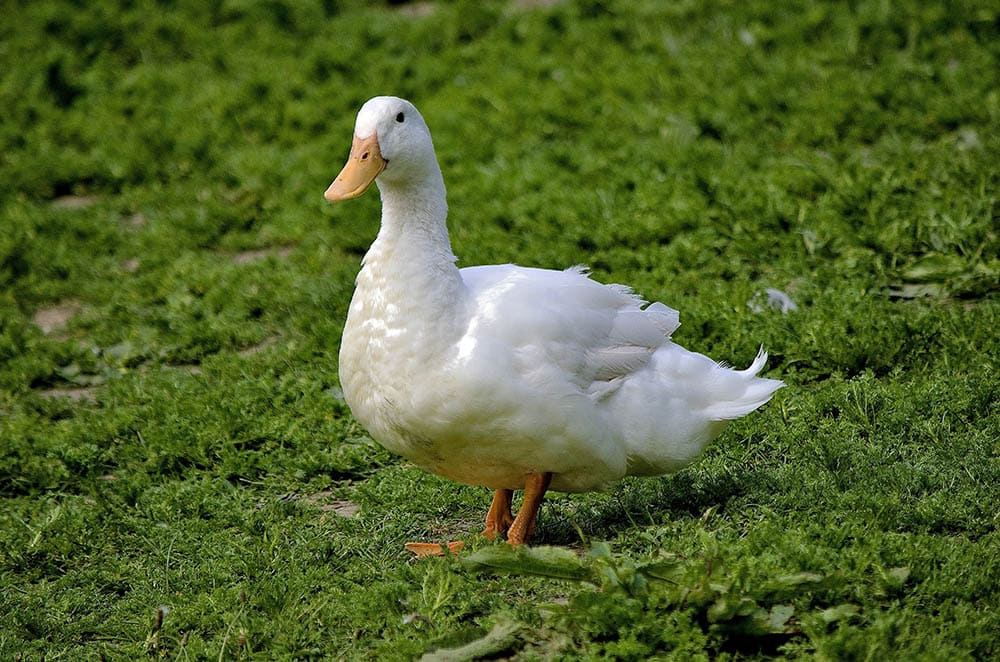
The Aylesbury is a rather large duck that rose to popularity in the 18th century in Aylesbury, Buckinghamshire, England, because their feathers made excellent quills. It is bred chiefly for its appearance and meat.
6. Bali Duck
Though the Bali Duck can be a good egg layer, it is mostly kept as a pet or for decoration. It is one of the oldest domestic duck breeds.
7. Black East Indian Duck
No one is quite sure where this duck originated, but the first writings about it in the U.S. occurred in the early 1800s, so we know this breed has been around for quite a while. It is known for its striking coloring that resembles the blue-green of a beetle’s shell.
8. Blue Swedish Duck
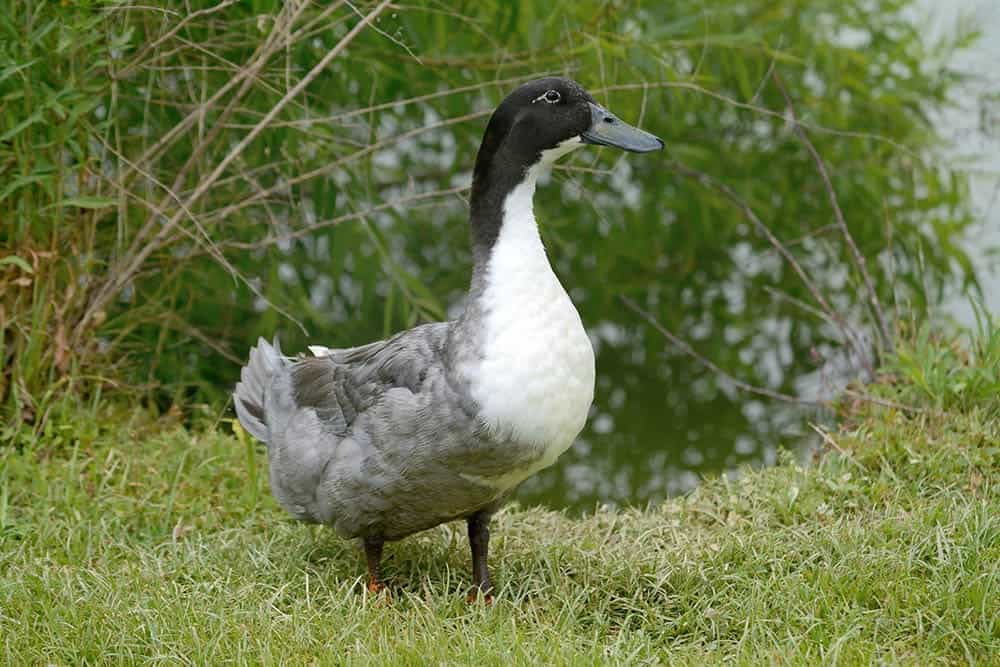
The Blue Swedish or Swedish Blue breed originated in Pomerania, most likely in the 1830s or 1840s. It is a utility breed that produces meat that is quite flavorful.
9. Buff Duck

Also called the Buff Orpington, this breed was developed in England in the early 1900s by the William Cook family. They lay extremely good egg quantities and make wonderful roasting ducks.
10. Call Duck
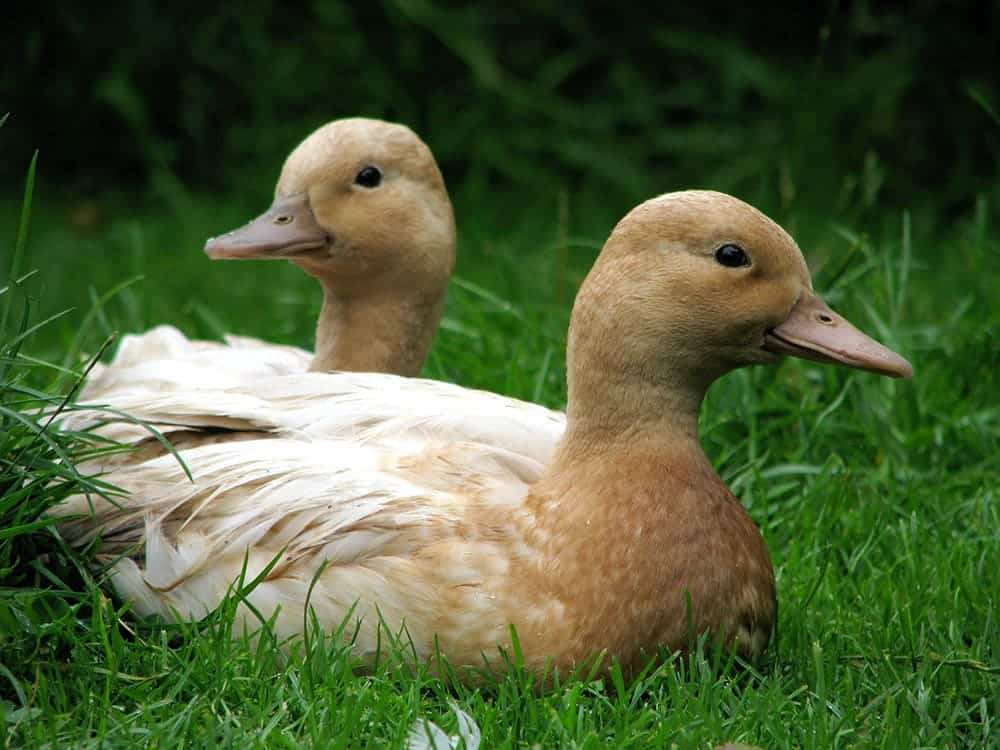
Used mostly as pets or decoration, the Call Duck has a distinctive call that is very high-pitched. The first mentions of this breed come from the Netherlands, where they were used as decoys to lure other ducks into traps via their call.
11. Cayuga Duck
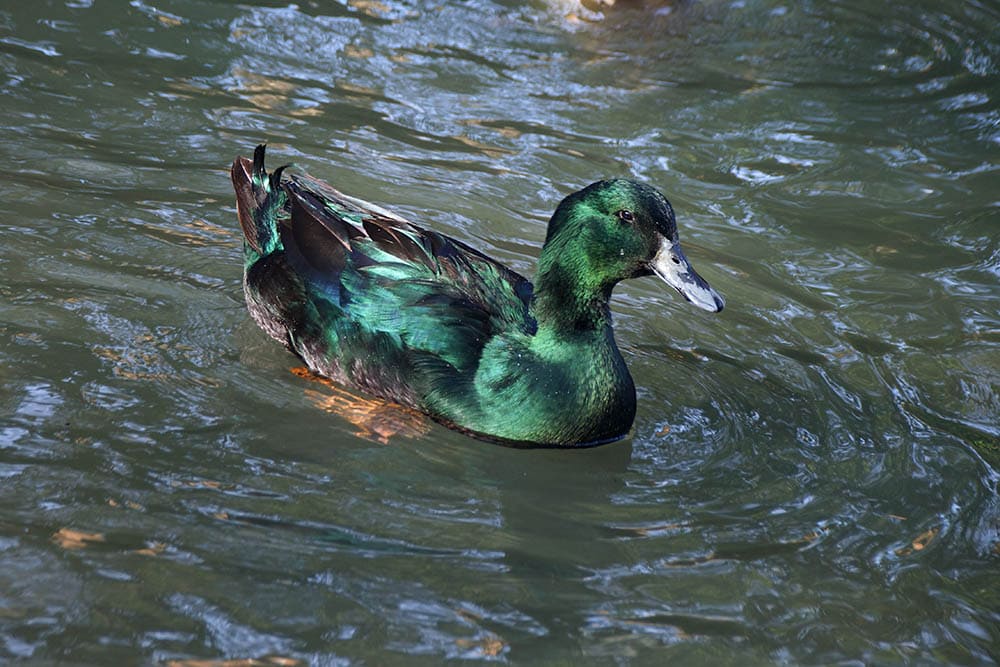
This is known as one of the hardiest domestic duck breeds around. They can produce anywhere from 100 to 150 eggs a year—eggs that are black at first but then get lighter.
12. Crested Duck
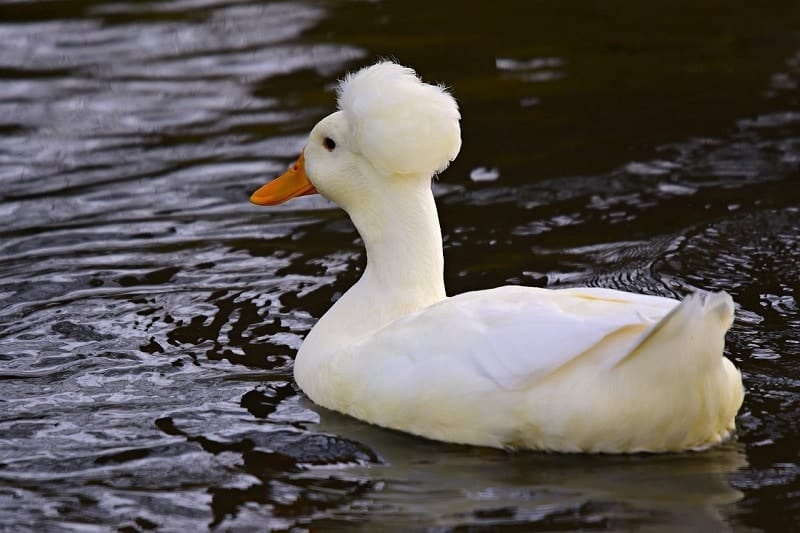
You’ve probably seen this breed before; they’re known for what looks like a giant cotton ball on their heads. They are dual-purpose ducks that can be used as egg layers or for meat.
13. Crested Miniature Duck
This is a miniature version of the Crested Duck, as the name suggests. It is a rarer breed that came about in the 1980s when Roy Sutcliffe of Yorkshire bred them to make a replica of the regular Crested Duck.
14. Dutch Hook Bill Duck
This breed is quite old, thought to have originated somewhere between the 17th and 18th centuries in the Netherlands. They are some of the best foragers out of all domestic duck breeds.
15. Indian Runner

You can recognize this breed by the way they stand—upright like penguins—and by the way they run instead of waddle. They don’t really use nests when laying eggs; instead, they just lay eggs as they’re running or walking about.
16. Golden 300 Hybrid Duck

This breed was only developed in 1996 and, as the name suggests, was made by crossing attributes of several duck breeds. Why was it created? To make a duck that lays more and larger eggs.
17. Golden Cascade
The Golden Cascade has only been around since 1979. Created in Oregon by David Holderread, it is a fast-growing duck used mainly for egg production.
18. Khaki Campbell Duck

One of the more famous duck breeds, the Khaki Campbell, was created in 1901 by Mrs. Adele Campbell. Though they are often used in exhibitions, they were made with production in mind. The Khaki Campbell are excellent egg layers!
19. Magpie Duck

Introduced to the U.S. in 1963, the Magpie is named for its black and white plumage. It was recognized by The American Poultry Association in 1977.
20. Orpington Duck

This breed can lay around 220 eggs a year and produces excellent meat. However, they are more often kept as pets or decoration due to their gentle natures.
21. Rouen Duck
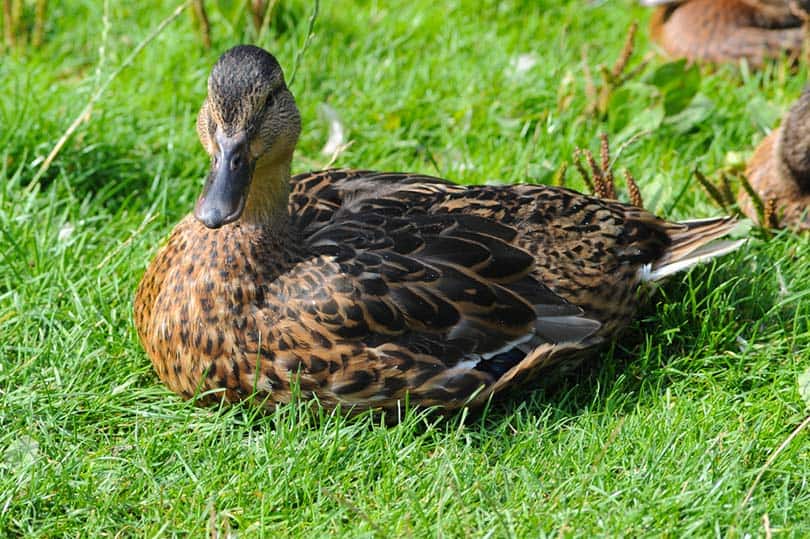
The name of this duck breed derives from the French city from which they came. They look quite similar to the Mallard and are usually bred for their meat.
22. Rouen Clair Duck
The Rouen Clair is an entirely separate breed from the Rouen Duck and is thought to have come from an area north of Paris around 1920. It looks similar to the Rouen but is smaller and has paler colors.
23. Saxony Duck

Created in Germany in 1930 by Albert Franz, the Saxony was bred from a mix of Rouen, German Pekin, and Blue Pomeranian ducks. Most Saxony didn’t survive World War II, so Franz renewed breeding them afterward. They weren’t imported to the States until 1984. In 2000, they were placed in The American Poultry Association’s Standard of Perfection.
24. Silver Appleyard Duck
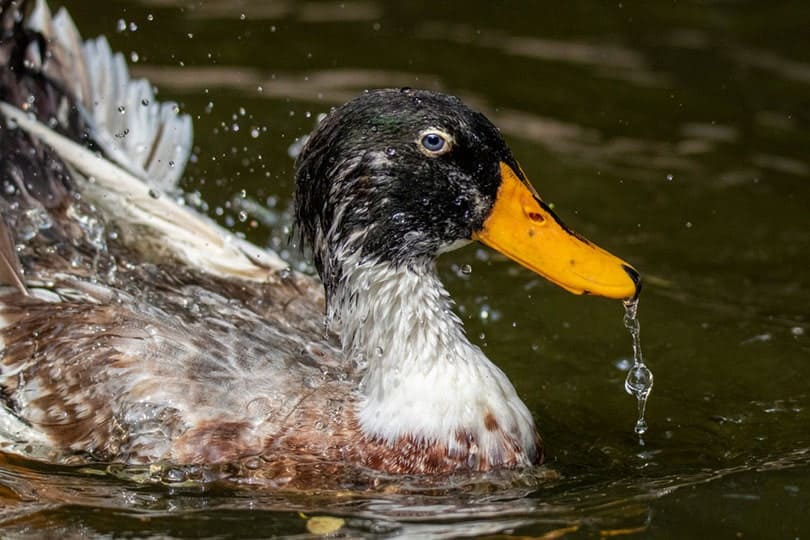
This domestic duck breed was made in the 1930s in England by Reginald Appleyard. They came to the U.S. in the 1960s but didn’t become available to the public till 1984. They produce great meat and lots of eggs.
25. Silver Appleyard Miniature Duck
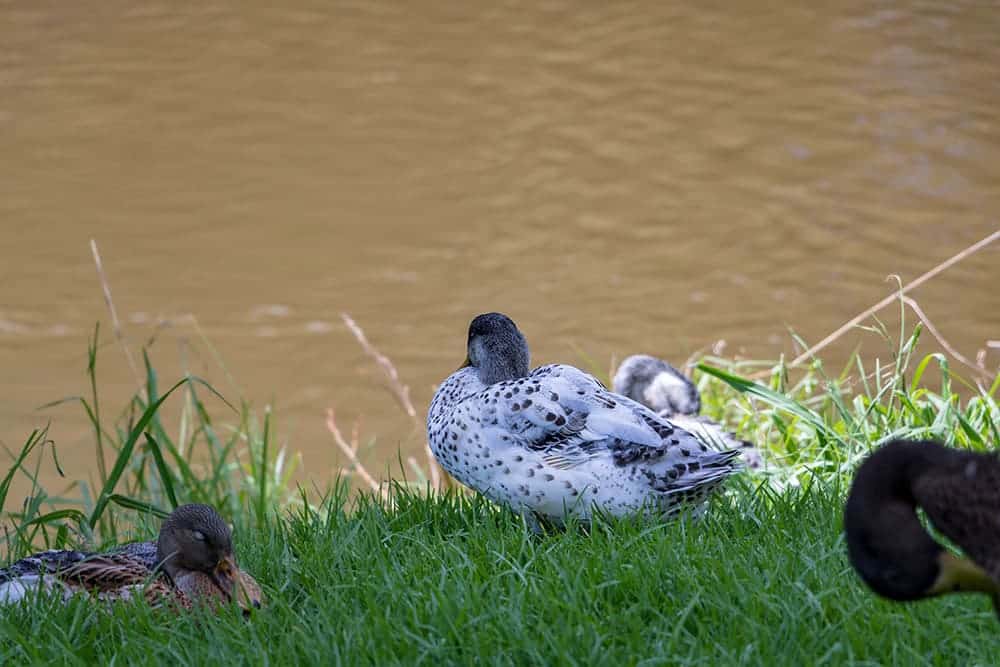
Tom Bartlett developed the miniature version of the Silver Appleyard in 1980 (though the breeds have been separately standardized). It’s a gorgeous duck that weighs about 1/3 the size of the original breed and is popular for exhibitions. They are also used as egg layers.
26. Welsh Harlequin Duck
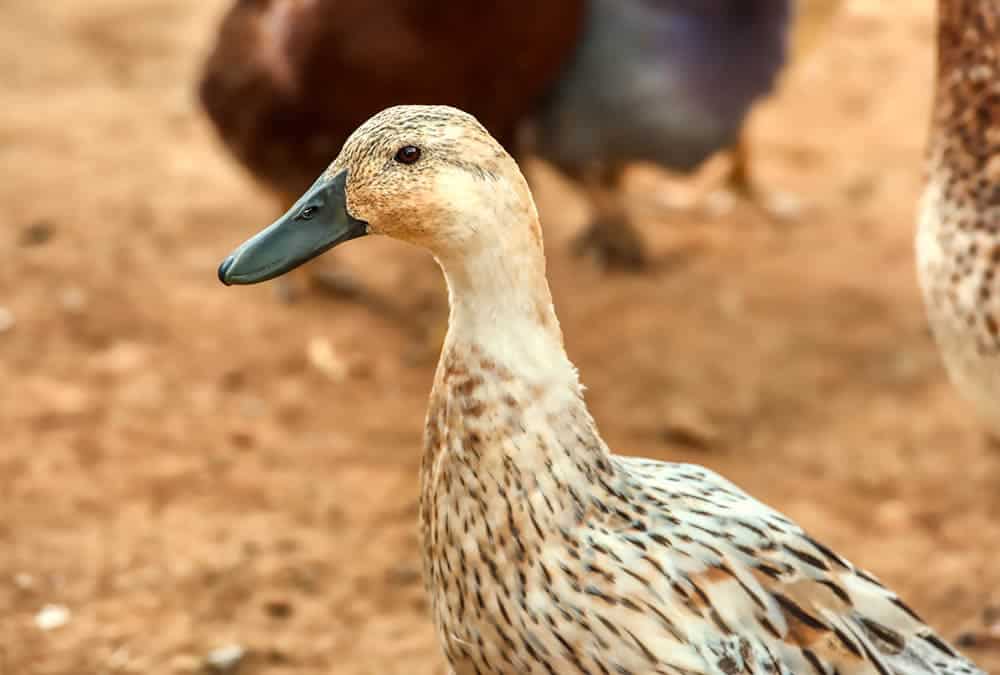
The Welsh Harlequin was created in Wales in 1949 by Leslie Bonnett and came to the U.S. in 1968. These inquisitive ducks are quite popular, as they are multi-purpose and can be used for meat and eggs.
27. White Layer Duck
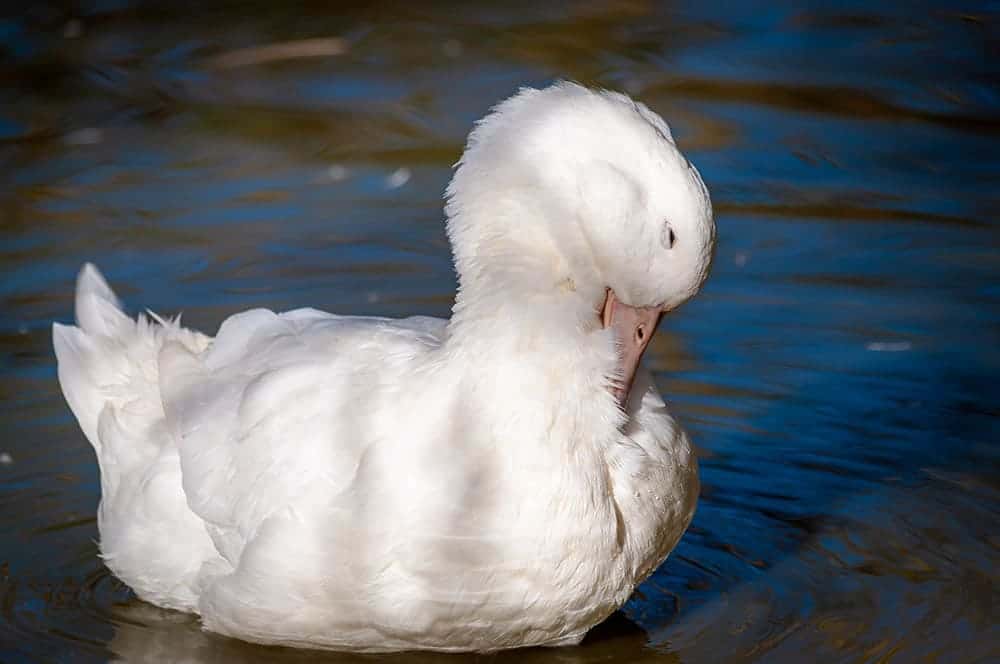
The name of this duck breed tells you they are pretty prolific egg layers. In fact, they lay nearly 300 eggs a year! These particularly hardy ducks were developed in 1999, just so there could be an all-white egg layer.

Wild Duck Breeds
1. African Black Duck

Genetically speaking, the African Black Duck is closest to the Mallard Duck. It is found most often in southern and eastern sub-Saharan Africa and is also known as the Black River Duck, West African Duck, and Ethiopian Black Duck. You’ll find them in streams and rivers during the day and open waters at night. This breed is timid but also incredibly territorial.
2. African Pygmy Goose

Despite the “goose” in the name, this is a breed of duck—a perching duck, to be exact. They do have bills like those of geese, though. It is a nomadic breed that feeds primarily on the seeds of water lilies.
3. American Black Duck
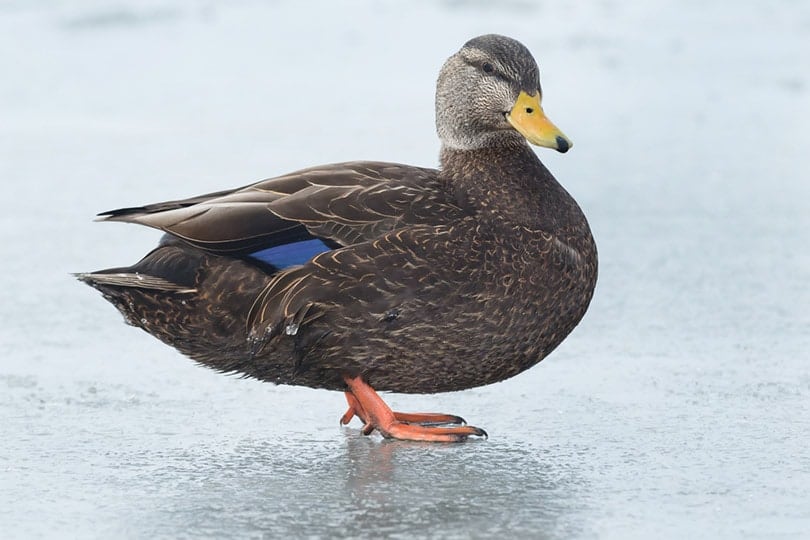
As a dabbling duck, the American Black Duck sticks its head underwater to eat but doesn’t go any further under. They’re rather large at nearly 24 inches long and have profiles that look similar to that of the Mallard Duck.
4. American White-Winged Scoter

This is the largest of the three North American Scoters. You can recognize males of this breed by the knob on the base of their bill. They are monogamous and are thought to form long-term pairs.
5. American Wigeon
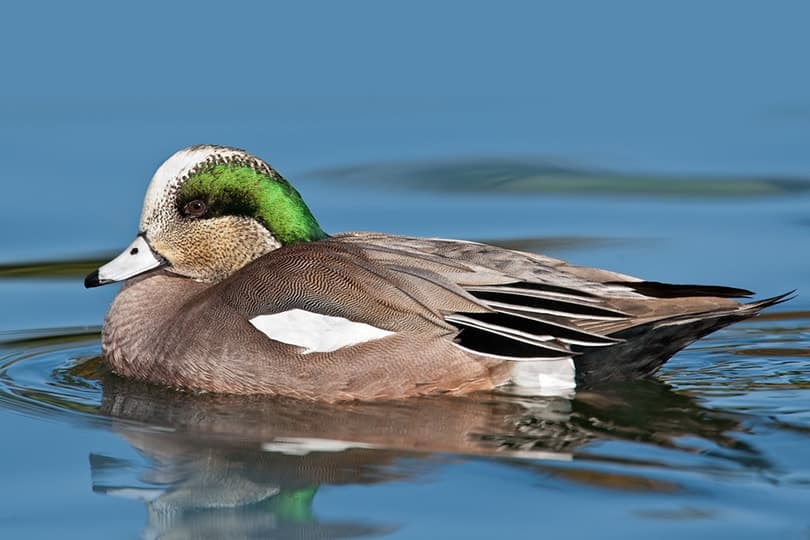
Also known as the Baldpate, this dabbling duck is quite common, though their populations have started to decline in recent years. The name Baldpate comes from the white stripe on their heads that bear a resemblance to the bald head of a man.
6. Andean Teal
This South American duck can be found anywhere from Venezuela and southern Ecuador. Although it looks strikingly different from the Green-Winged Teal, its DNA is quite similar.
7. Auckland Islands Teal
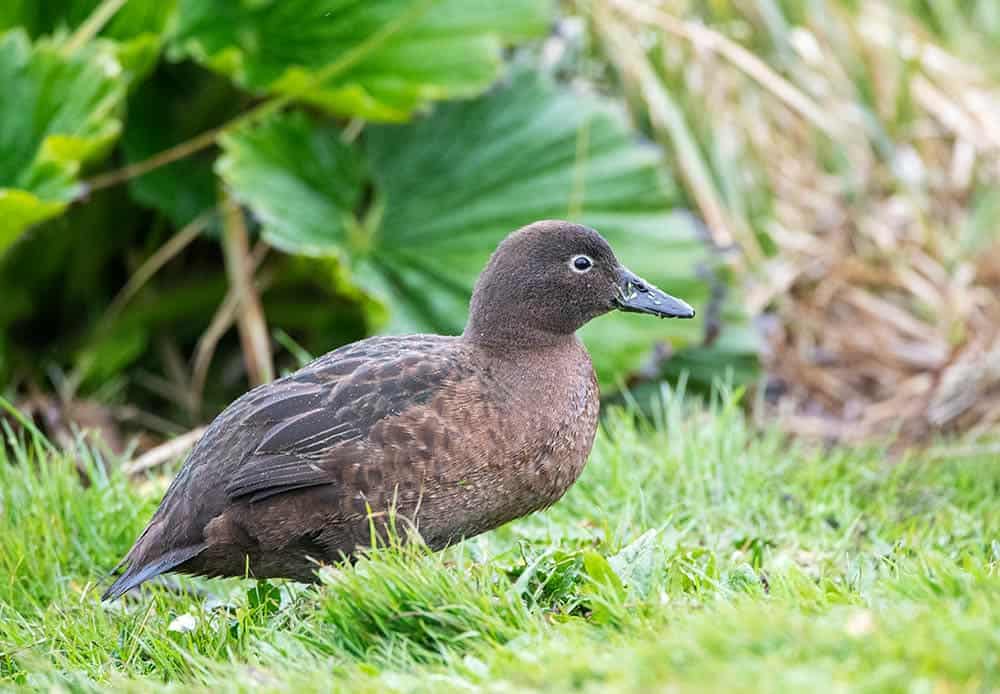
Also referred to as the Auckland Teal, Flightless Teal, and Auckland Island Flightless Duck, these ducks are found amongst the Auckland Islands group. They are descended from a duck in New Zealand known as the Brown Teal but are classed separately. The population is thought to only be about 1,000.
8. Australasian Shoveler
This dabbling duck is found in New Zealand, Tasmania, and Australia. They are filter-feeding ducks who have bills resembling shovels. These ducks are incredibly mobile; they travel the length of New Zealand each year.
9. Australian Shelduck
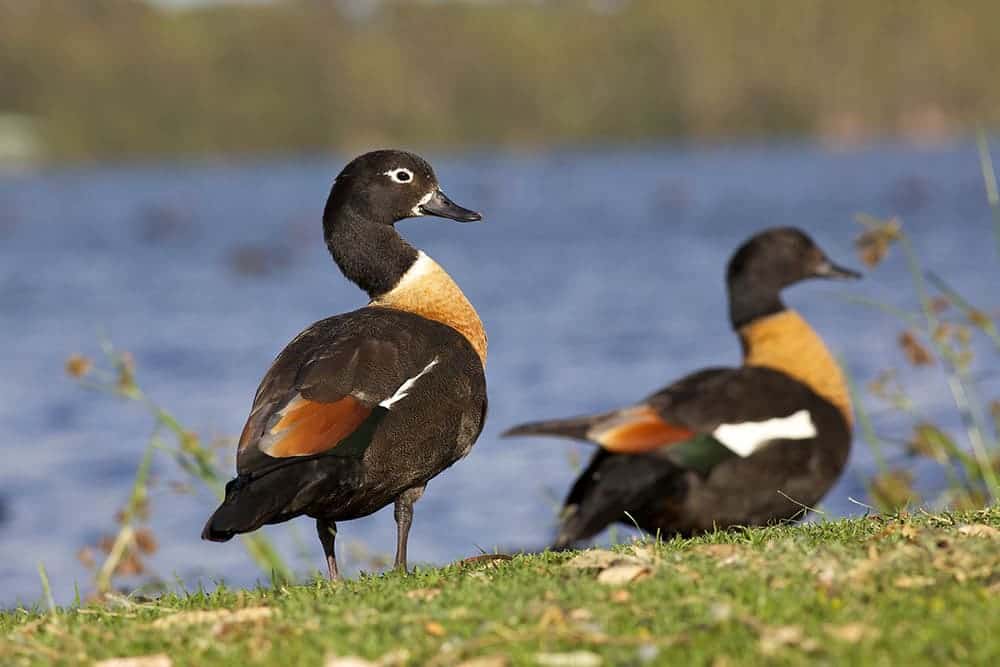
This colorful duck is also called the Mountain Duck or Chestnut-Breasted Shelduck and was first described in 1828. Located in Australia and Tasmania, they sometimes hang out in flocks of 1,000 or more!
10. Australian Wood Duck
This dabbling duck resembles a goose and is found throughout Australia. They are monogamous ducks who stay together all year long. These ducks prefer shallow water to open water.
11. Baer’s Pochard

A diving duck found in Asia, the Baer’s Pochard is incredibly rare. It is named after Estonian naturalist Karl Ernst von Baer. In 2012, it was classified as a critically endangered breed.
12. Baikal Teal
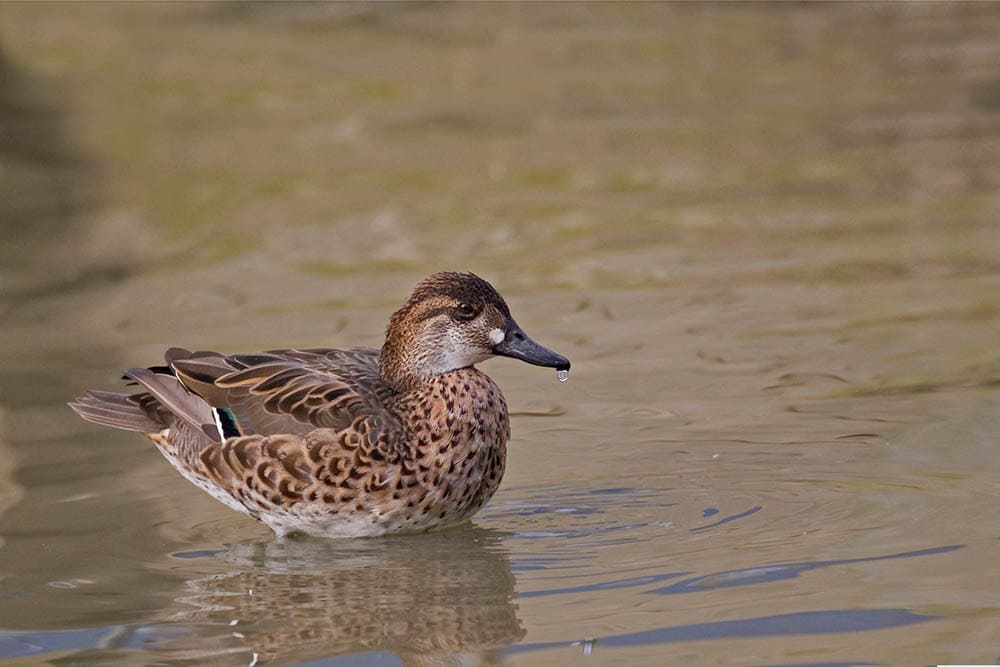
Also called the Bimaculate Duck or Squawk Duck, this dabbling duck was first officially described in 1775 by Johann Gottlieb Georgi. The males are extremely recognizable due to their yellow and green facial patterns. Though it was previously classified as vulnerable, the populations have been increasing.
13. Barrow’s Goldeneye
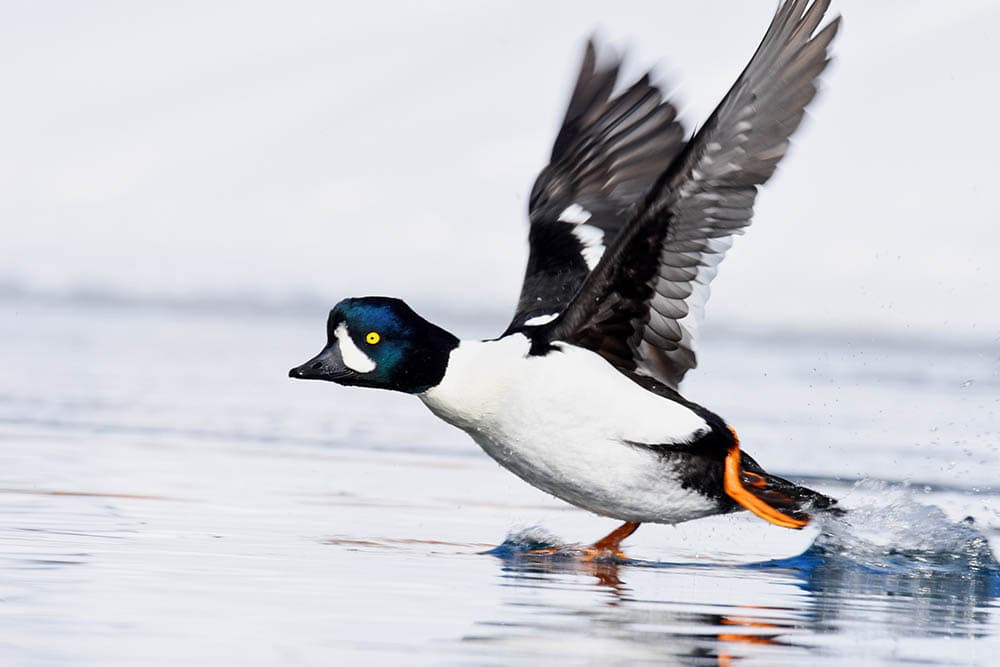
Named for Sir John Barrow, these ducks can be found in a range of locations including, Canada, North America, and Iceland. The heads of these ducks are somewhat oddly shaped with a bit of a bulbous shape. The Barrow’s Goldeneye was impacted greatly by the Exxon Valdez oil spill of 1989.
14. Black Scoter

The Black Scoter, once known as the Common Scoter, is so named due to the all-black color of the males. Out of the three Scoters in North America, they are the least often seen. As sea ducks, they are vulnerable to pollution in the ocean; their populations are believed to be declining.
15. Black-Bellied Whistling Duck
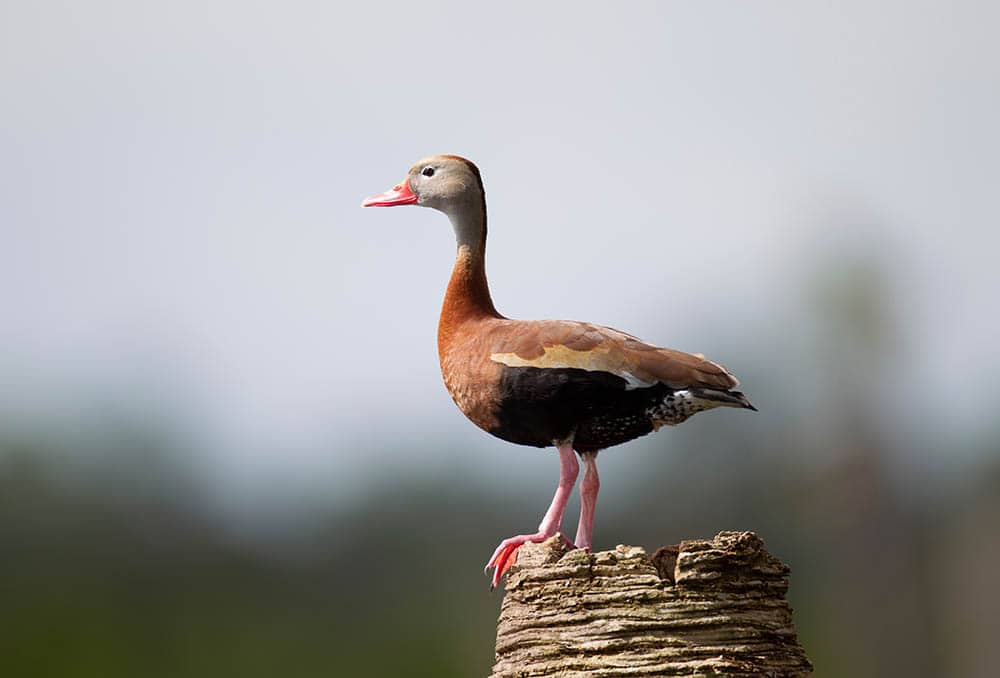
These ducks are notable for their bright pink bills and noisy natures. They are found most often near the Mexican border, and yes, they do actually have a call that is whistling.
16. Black-Headed Duck
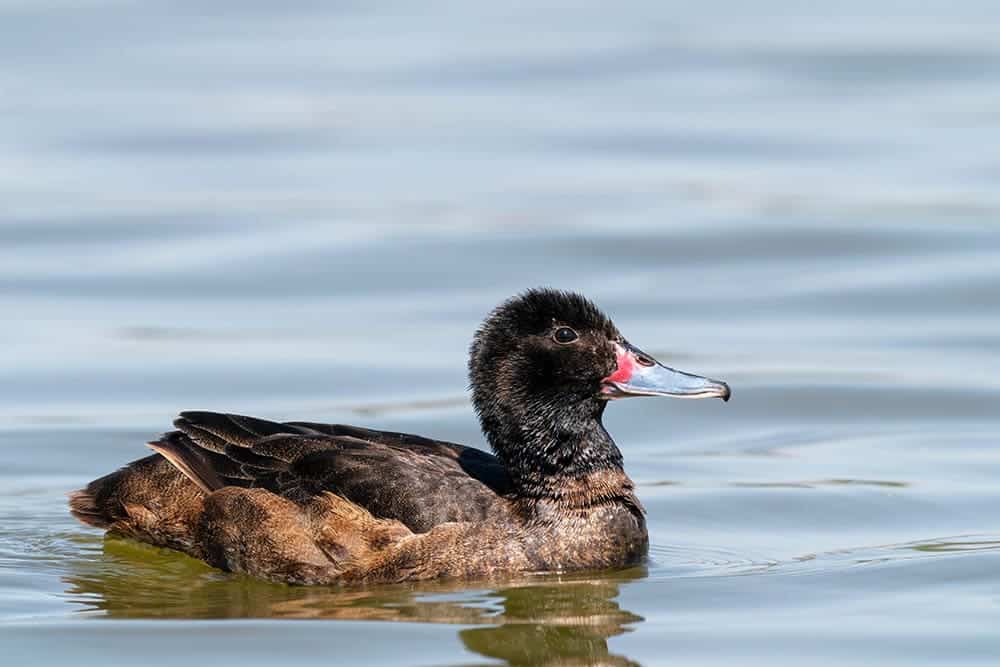
This South American duck is relatively uncommon and is named due to the black head of the males. Female Black-Headed Ducks don’t build nests to lay their eggs in—instead, they lay their eggs in the nests of other birds!
17. Blue Duck
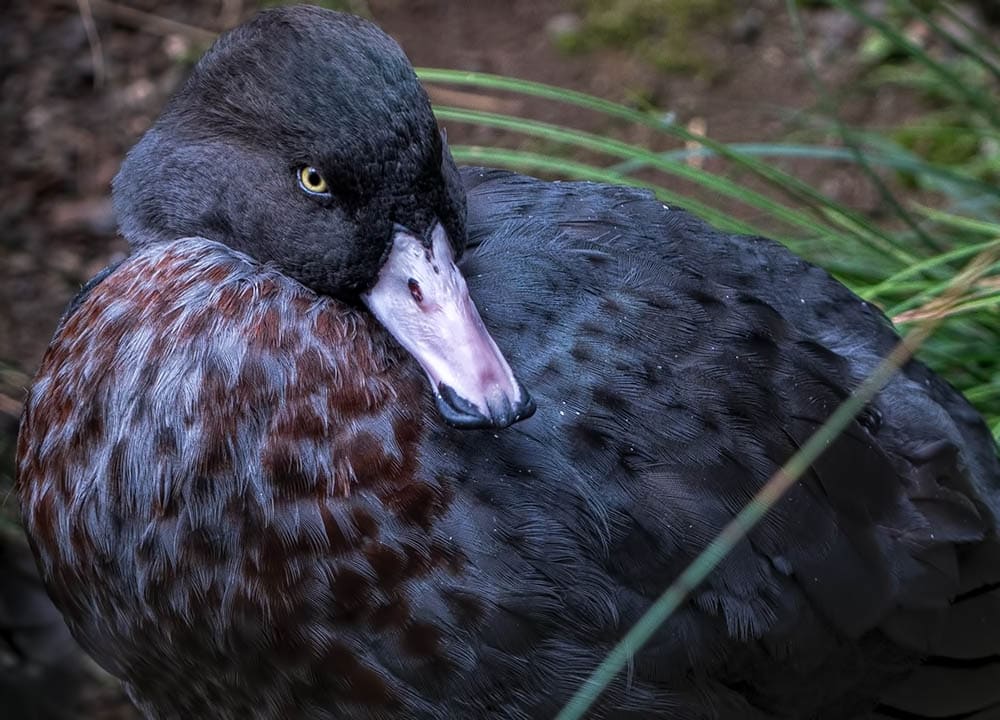
Hailing from New Zealand, this duck breed is known in its homeland by its more common name, Whio. Whio (a Maori word) is a word that phonetically resembles the call of the male Blue Duck.
18. Blue-Billed Duck

A tiny Australian duck with a stiff tail, this duck breed is named after the bill of the male, which changes from blue-gray to a bright blue, depending on the season. BirdLife International has labeled this bird as near threatened due to its natural habitats becoming more damaged.
19. Blue-Winged Teal

These Teals are tiny and are fast movers when they’re flying. Sometimes you’ll see flocks of these ducks flying over the ocean, far from shore.
20. Brazilian Teal
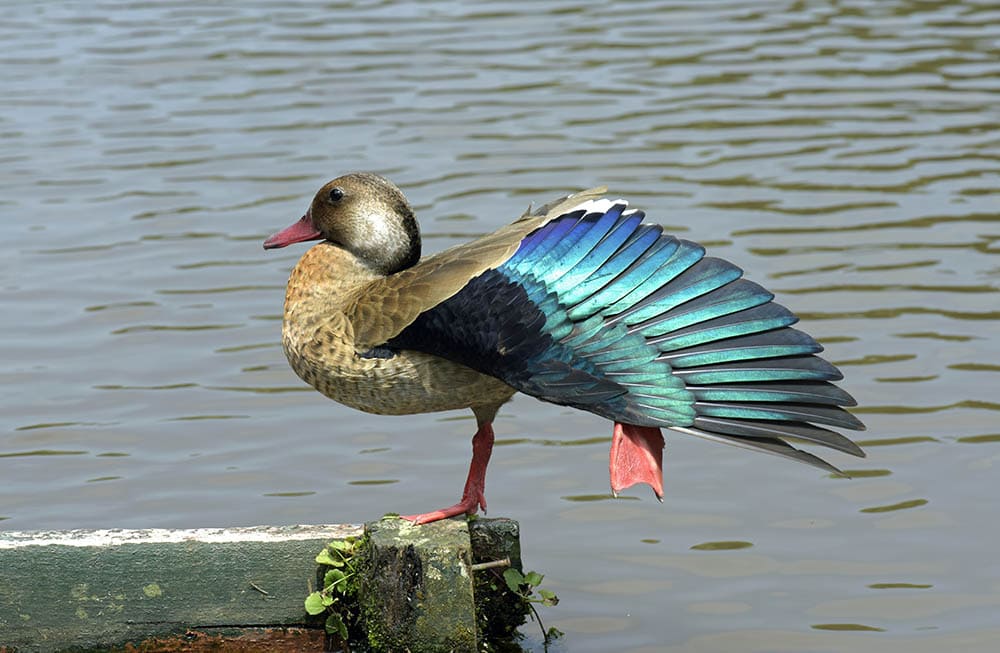
Also known as just the Brazilian Duck, this breed was formerly classified as perching ducks but has been moved to the group of dabbling ducks. They are light brown, and you can tell males from females by the red bill.
21. Brown Teal
Another duck that calls New Zealand home, this duck breed had its population numbers fall drastically in the past—as they were a food source—until they became a protected breed in 1921.
22. Bufflehead
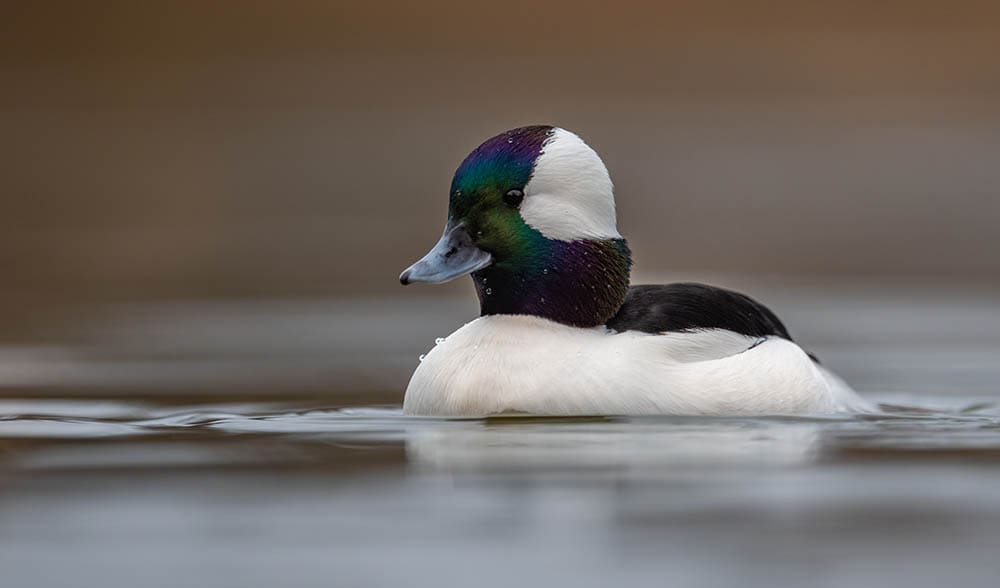
The Bufflehead is a smaller duck with a large head. The males are distinctive due to the white cap on their heads and the blue-green coloring on their faces.
23. Campbell Island Teal

This duck breed could once be found on the Campbell Islands in New Zealand. However, after the introduction of Norway Rats to the islands, they were considered to be extinct. They were later rediscovered on a different island nearby that didn’t have the rats.
24. Canvasback
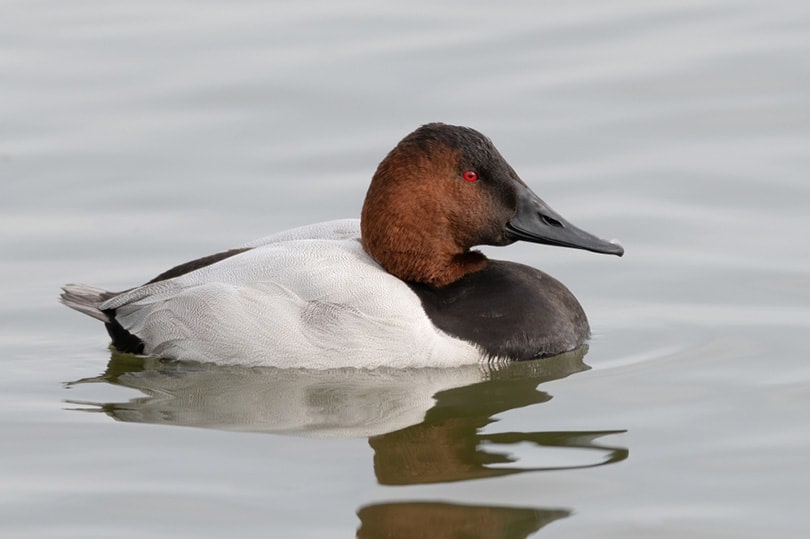
The Canvasback is the biggest diving duck found in North America. In the mid-19th century, they could often be found on banquet menus.
25. Cape Shoveler

This South African duck breed has a bill that’s highly recognizable as it is shaped similarly to a spatula. It is known for being a rather quiet breed with only a few vocalizations.
26. Cape Teal

A duck from sub-Saharan Africa, this breed is a dabbling duck who also dives—one of the few dabbling ducks to do this. These ducks are excellent parents who will defend their ducklings against larger predators.
27. Chestnut Teal

The Chestnut Teal is an Australian duck—one of the rare Australian ducks that can handle water with high amounts of saline. The female of this breed has a unique quack that sounds like loud laughter.
28. Cinnamon Teal
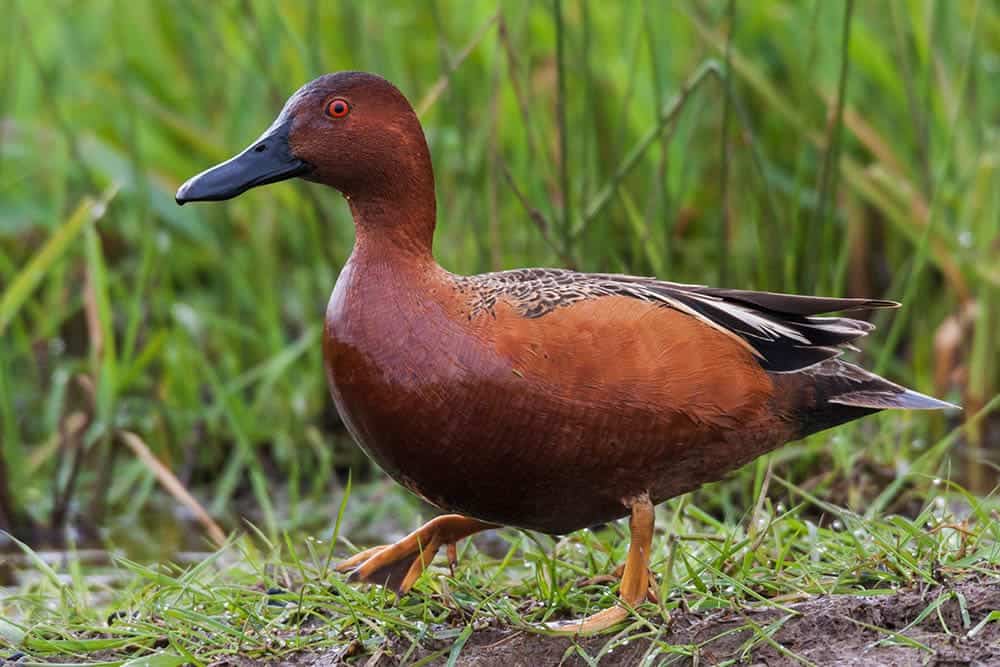
Unlike other marsh duck breeds, the Cinnamon Teal sticks to coasts on the West instead of being found coast to coast. Males are a beautiful cinnamon color, hence the name.
29. Comb Duck

Also called the American Comb Duck, this South American breed has a highly unusual bill with a massive knob, making them relatively easy to spot. They stay silent for the most part, though you will hear a croak when they are flushed.
30. Common Goldeneye
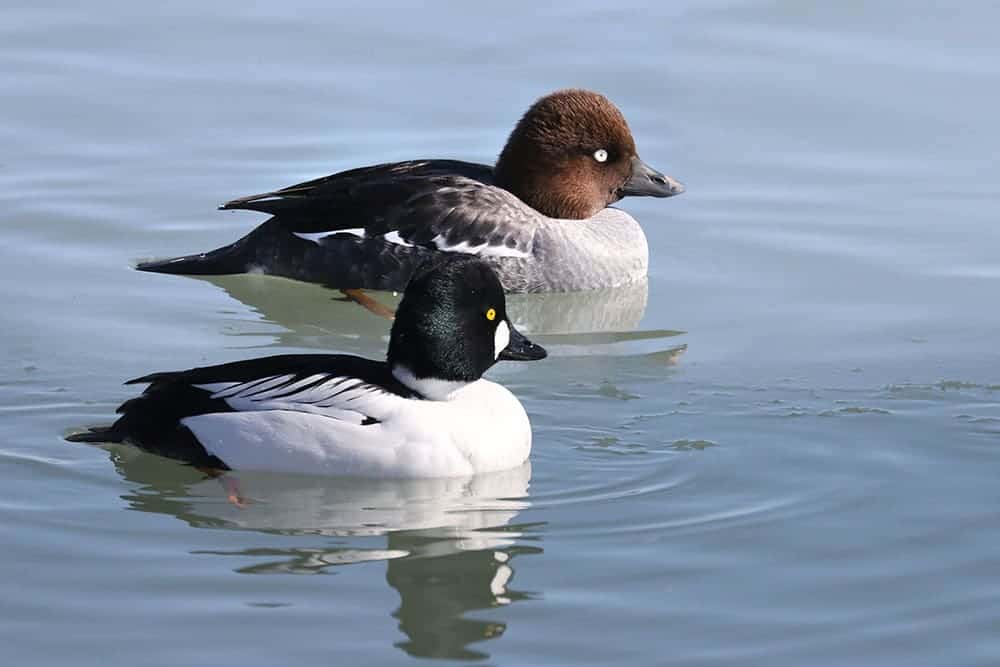
A sea duck of medium size, this breed can be found all the way from Canada to Russia. They have large heads that somewhat resemble those of the Bufflehead.
31. Common Pochard
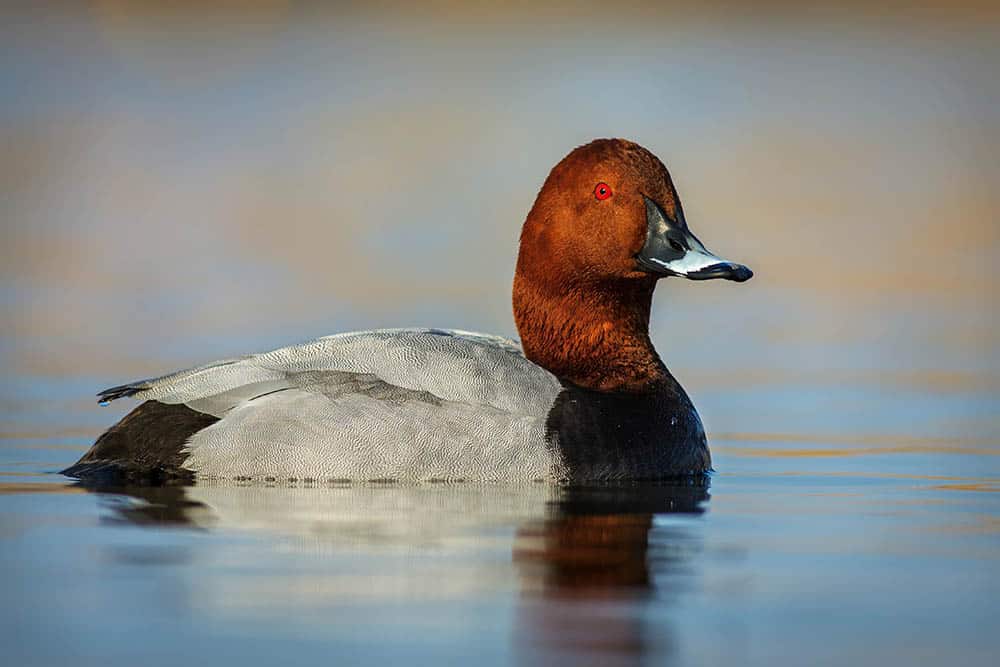
These European diving ducks are friendly birds that often mix with other diving ducks. Unfortunately, they are becoming less common in several countries due to the urbanization of their habitats.
32. Cotton Pygmy-Goose
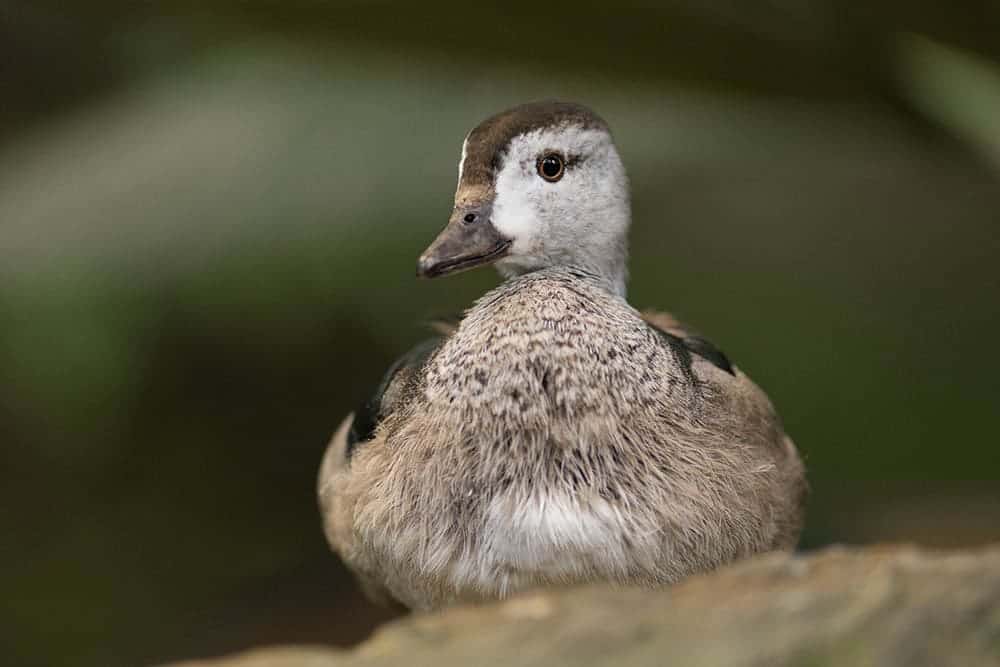
Unlike actual geese, this duck breed is quite small. In fact, they are some of the smallest waterfowl worldwide.
33. Eastern Spot-Billed Duck

A duck breed native to Asia, these ducks are named after the red spots found on their bills. The first description came in 1781 from German naturalist Johann Reinhold Forster.
34. Falcated Duck
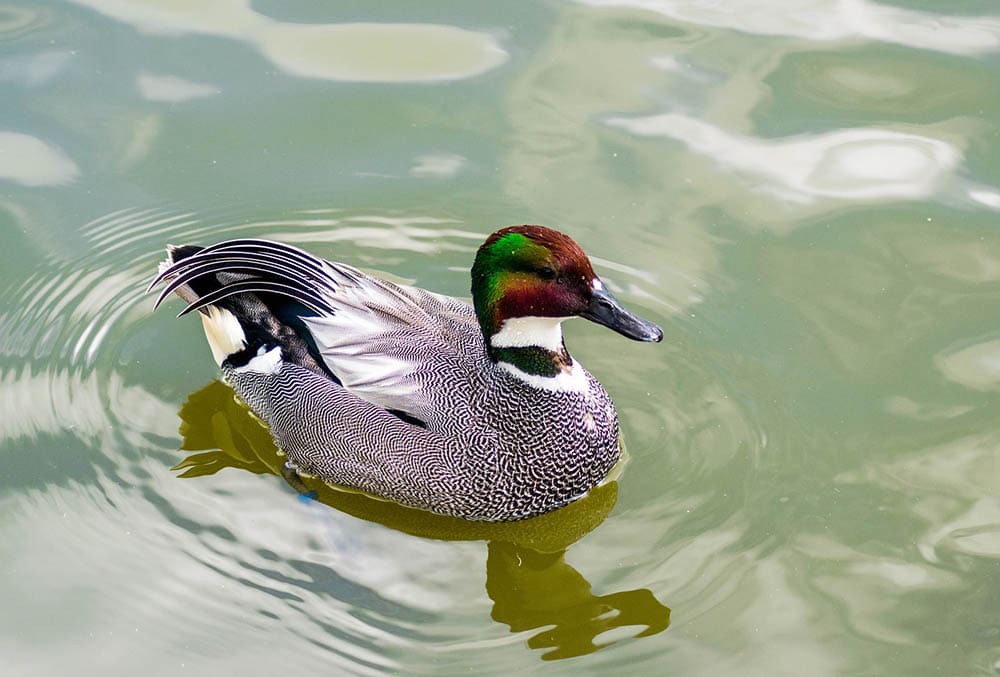
The Falcated Duck used to be known as the Falcated Teal. It is a dabbling duck native to the Palearctic, with its closest relative being the Gadwall.
35. Falkland Steamer Duck
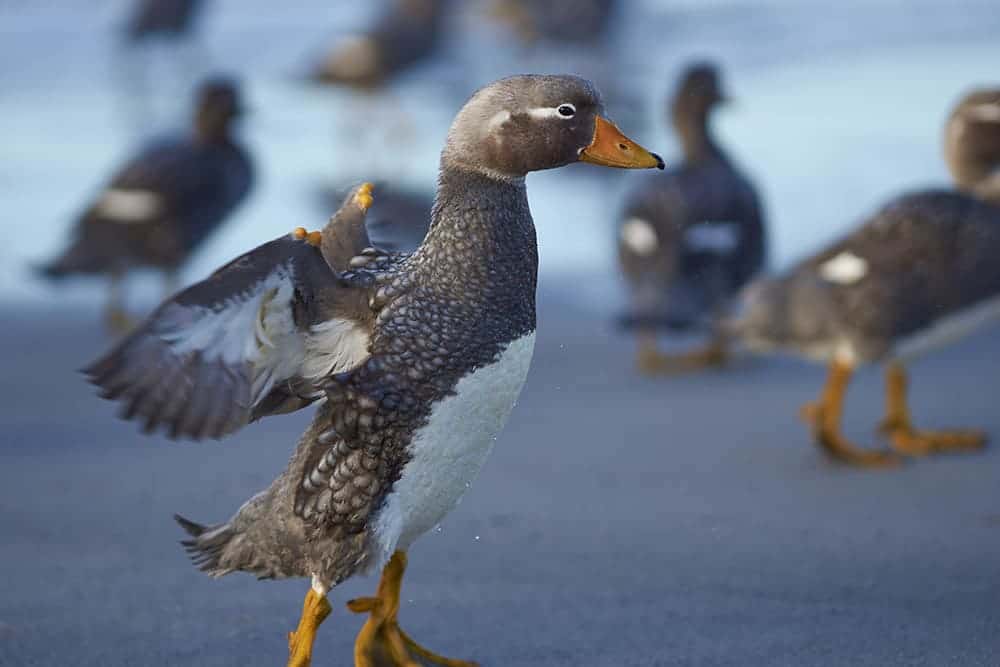
This flightless duck comes from the Falkland Islands. The “steamer” part of its name comes from the way they swim—by flapping both feet and wings in a way that looks like an old-fashioned paddle steamer.
36. Ferruginous Duck

A diving duck hailing from Eurosiberia, the Ferruginous Duck is also known as the Ferruginous Pochard, White-Eyed Pochard, or Common White-Eye. Their habitats are being threatened in a variety of ways, including pollution and the introduction of species that are non-native, which is cause for concern.
37. Flying Steamer Duck
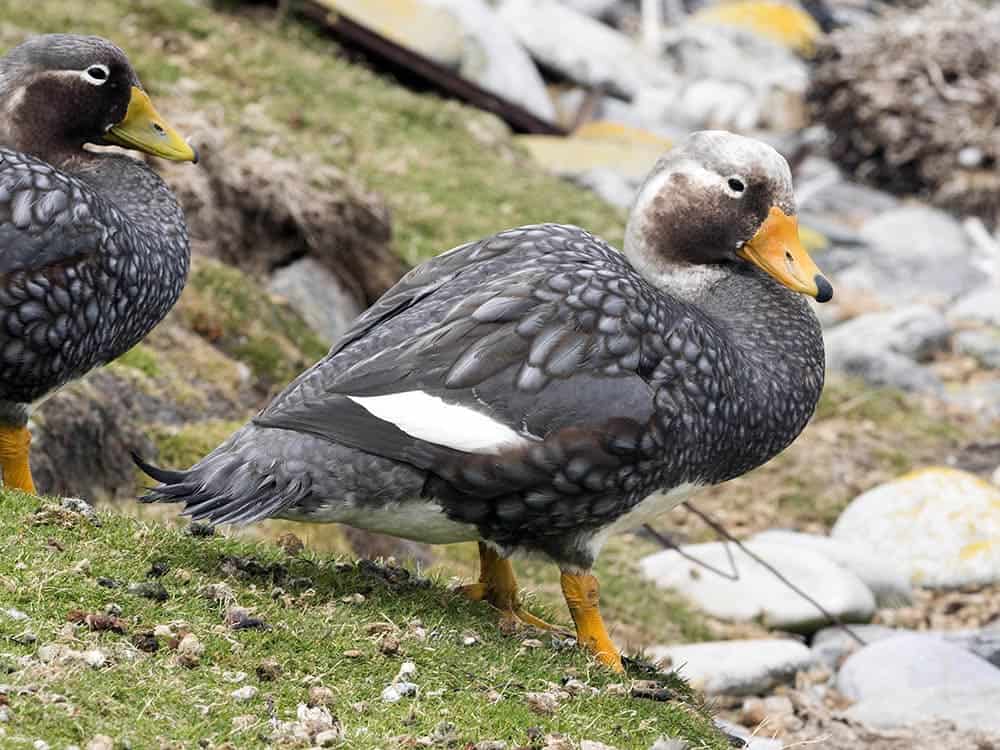
Unlike the Falkland Steamer Duck, this breed can fly (as the name indicates!). However, there are some males of this breed that won’t be able to fly due to their enormous size.
38. Freckled Duck

Another duck breed from Australia, the Freckled Duck is also called the Oatmeal Duck or Monkey Duck. The name comes from their freckled coloring. For the past few decades, breeding programs have been started in an attempt to boost their population.
39. Fulvous Whistling-Duck
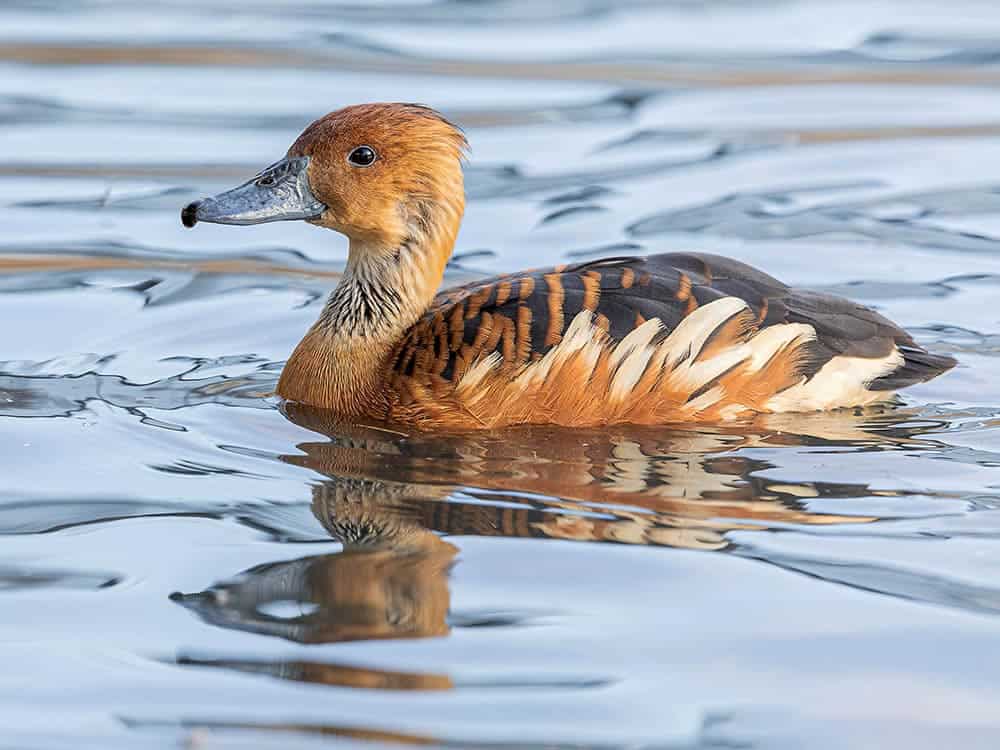
You’ll find this breed of duck spread out across tropical regions from the southern part of the U.S. to Mexico to Africa. You can recognize these ducks by their whistling call and, when they are in flight, the white band on their black tails.
40. Gadwall

The Gadwall is a very common duck that’s spread far and wide, including Europe, Canada, and in the U.S., the Dakotas, and the Great Lakes region, amongst other places. The population of these ducks has actually increased since 1966 and continues to do so.
41. Garganey

This dabbling duck can be found throughout the majority of Europe. It was first described in the landmark book, Systema Naturae, in 1758.
42. Greater Scaup
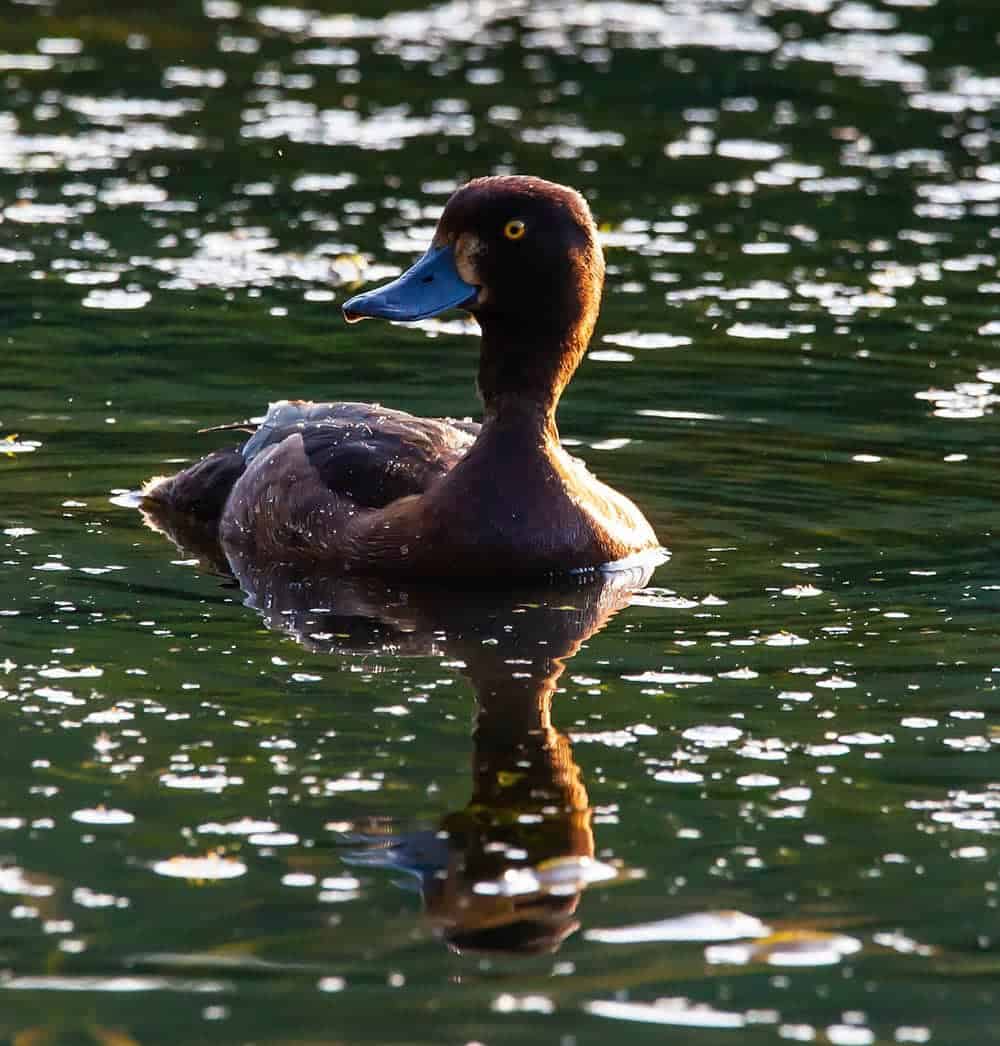
Also known as Bluebill in North America, this diving duck is known for its blue bills—bright blue on males and a blue-gray on females. They are a popular game bird, not only in North America but also in Europe.
43. Green Pygmy-Goose
Like the other Pygmy-Goose on this list, this duck breed found in Australia and New Guinea is reasonably small. The first description of it appeared in 1842.
44. Green-Winged Teal

The smallest dabbling duck in North America, this Teal is extremely common and widespread. They form large flocks that, when in flight, resemble waders.
45. Grey Teal

Found in the wetlands of New Zealand and Australia, these dabbling ducks are recognizable by their iris, which is crimson. It is quite vocal, particularly at night.
46. Hardhead

The only true Australian diving duck, the Hardhead is also known as the White-Eyed Duck. The name “hardhead’ didn’t come about because these ducks have hard heads; instead, it arose from how much trouble early taxidermists had in processing the duck’s head.
47. Hawaiian Duck
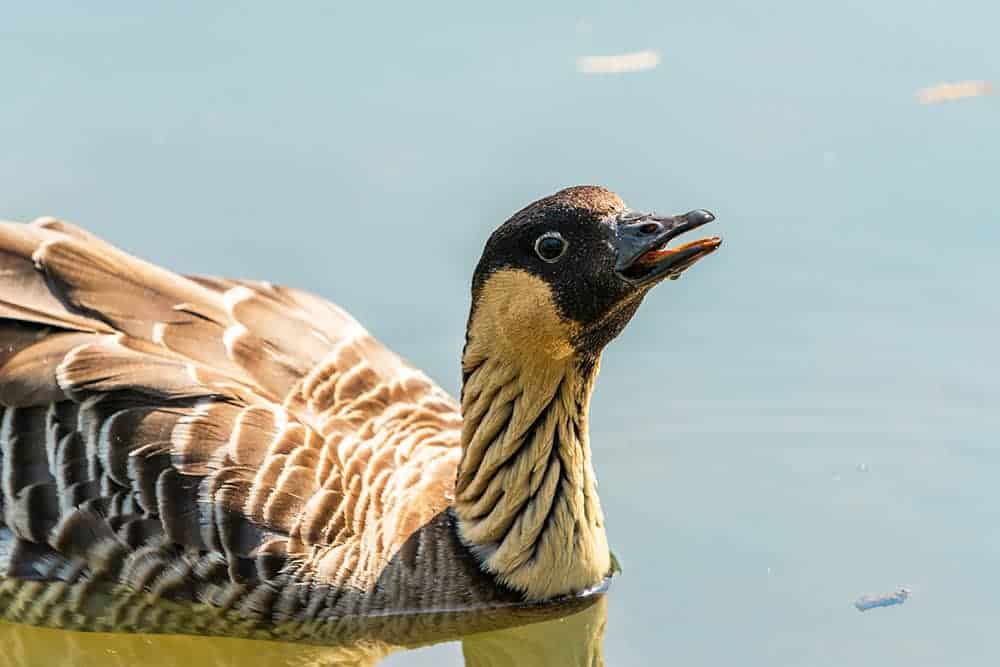
As the name suggests, this duck is native to Hawaii and thought to have come about from hybridization between the Laysan Duck and Mallards. The Hawaiian name for this duck is koloa maoli, meaning “native duck”. It is currently endangered.
46. King Eider
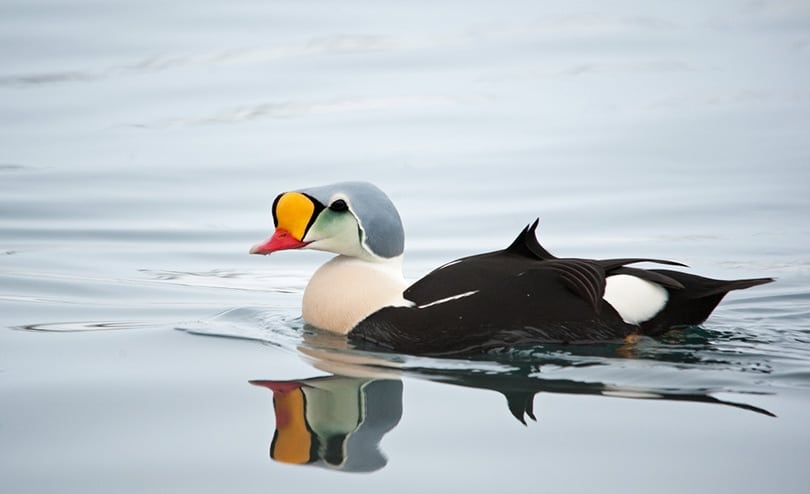
This sea duck is large and heavyset with a big head and heavy bill. You can find it along the coasts of North America, Asia, and northeastern Europe.
Related Read: 11 Colorful and Beautiful Duck Breeds (with Pictures)
49. Laysan Duck
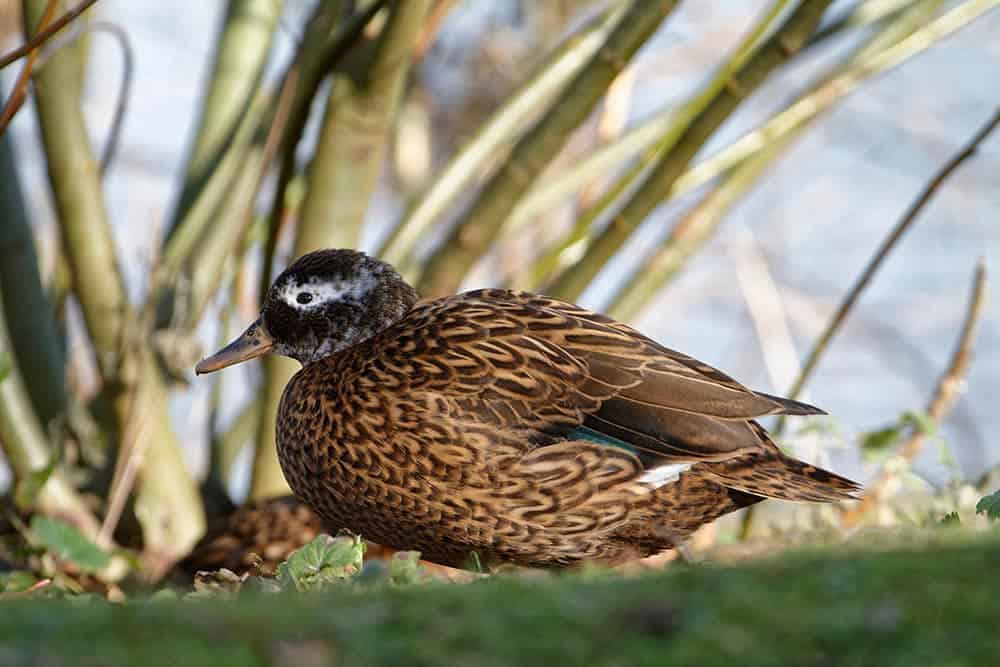
You may remember we mentioned this duck in the description for the Hawaiian Duck. A native of Hawaii, this dabbling duck was nearly brought to extinction in 1912 due to European rabbits being introduced to their habitats. Once the rabbits were removed, the Laysan began to regrow its population. 42 of these ducks were moved to the Midway Atoll National Wildlife Refuge in 2002, so they can hopefully be ensured a long future.
50. Lesser Scaup
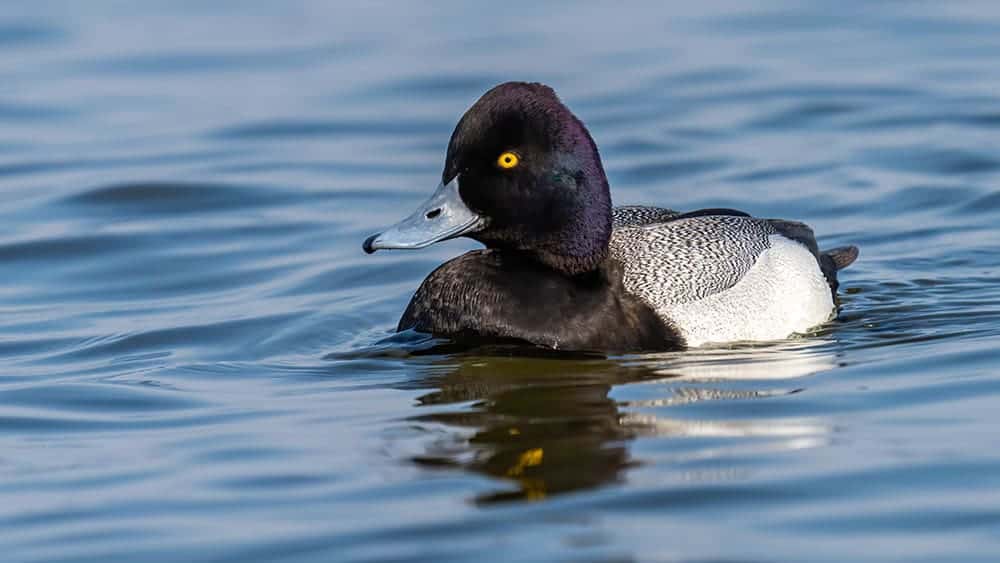
Known as the Broadbill or Little Bluebill (thanks to the color of its bill), this diving duck from North America was either given its name because of the female’s scaup call or because of their diet of scalp.
51. Long-Tailed Duck
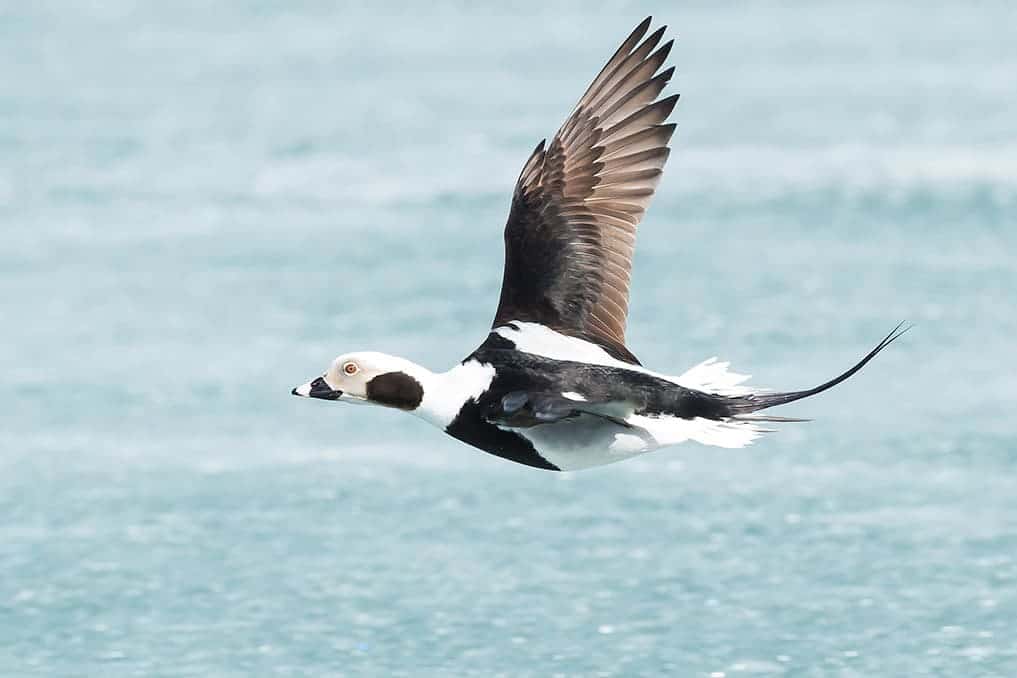
This beautiful breed of sea duck can be found in the Arctic amongst the tundra regions and does indeed have long tails. Though not endangered, their populations have been in decline.
52. Mallard
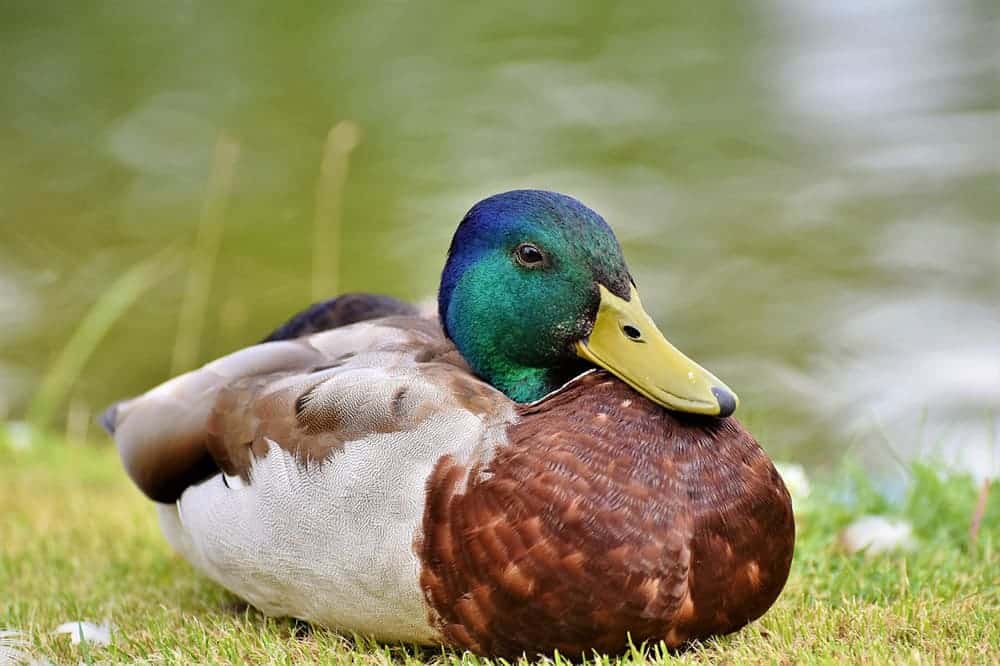
The Mallard is one of the most common duck breeds around (so much so that some areas consider them invasive!). Almost all breeds of domestic ducks descended from them.
53. Mandarin Duck
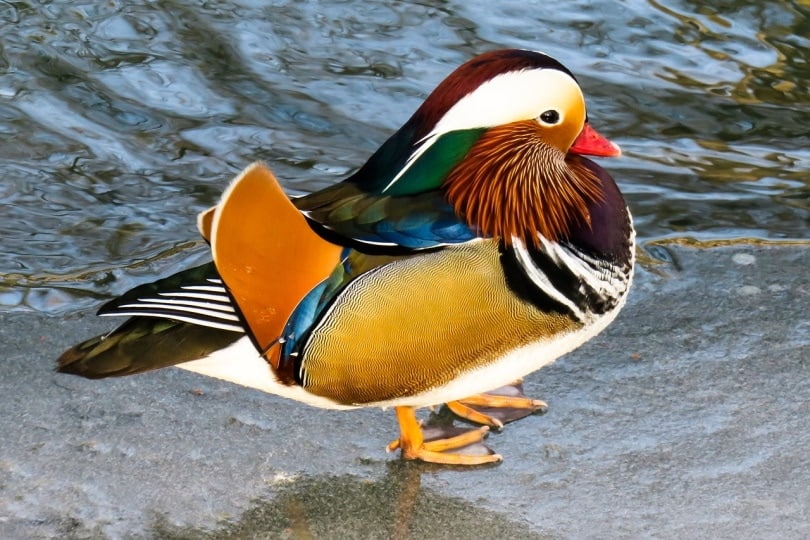
This duck may be one of the most beautiful around with its many colors, including red, orange, purple, and white. Though a native of the East Palearctic, they are pretty closely related to the North American Wood Duck.
54. Marbled Teal
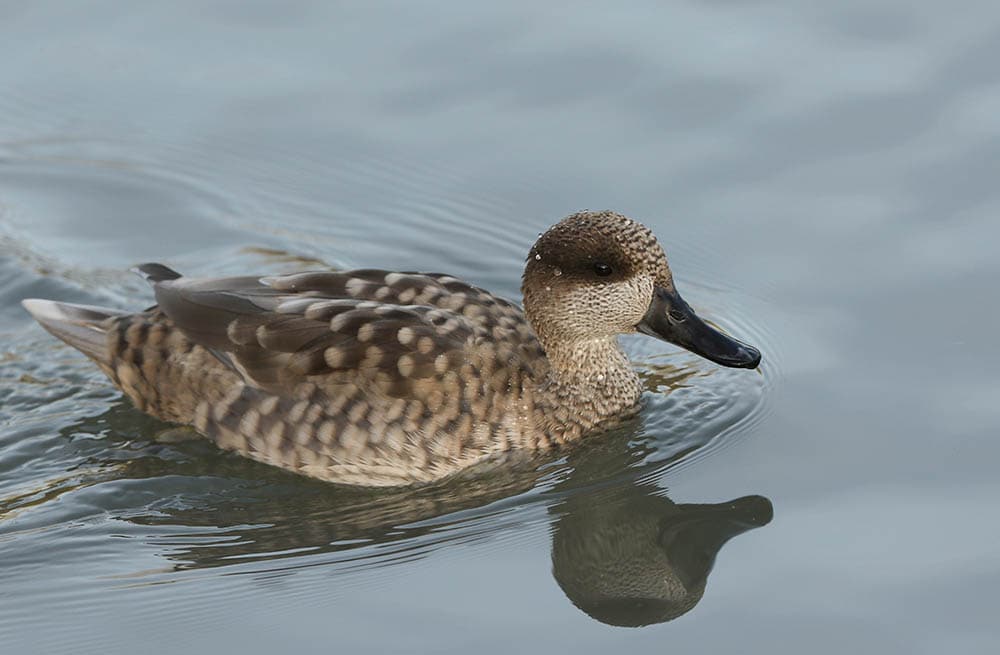
This duck has a speckled body that gives it its name. Located in Asia, Africa, and the Middle East, it has lost population numbers due to hunting and destruction of its habitat.
55. Masked Duck
Though a tropical duck, you can find this breed sometimes coming into Texas and Florida. They are very nomadic and secretive, making it challenging to figure out how many there are in the world.
56. Mottled Duck
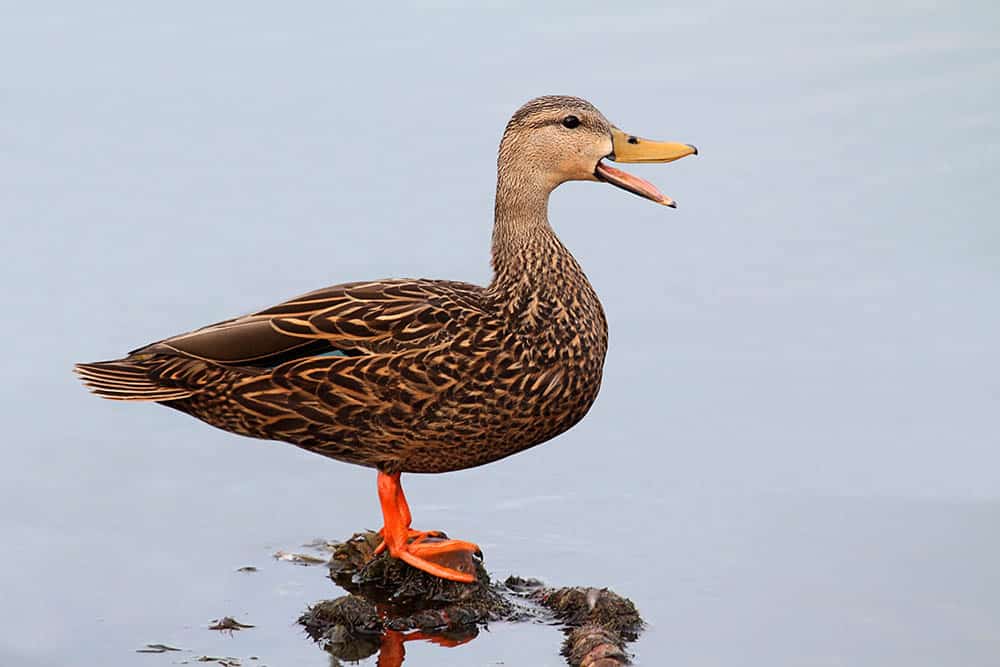
This breed is a cross between the American Black Duck and the female Mallard when it comes to appearance. You’ll find them most often in Florida along the Gulf Coast.
57. Muscovy Duck
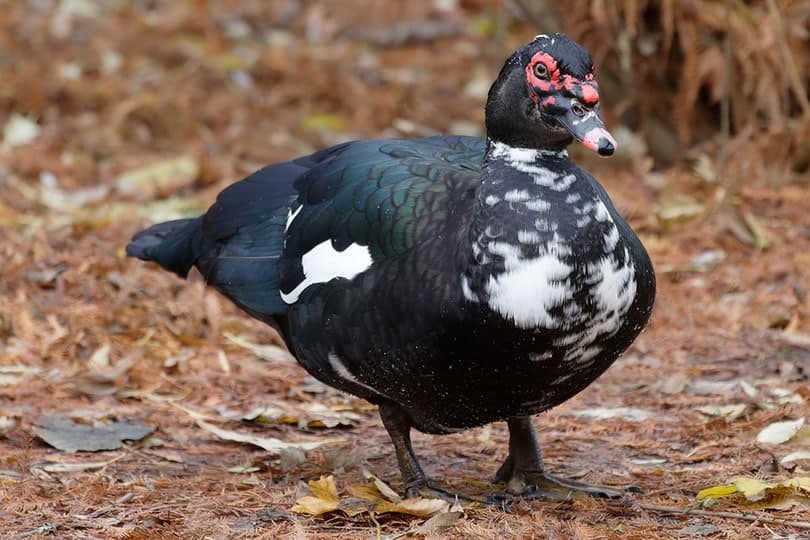
A native of the Americas, this duck is known for its wattles that are either pink or red. Despite being a tropical bird, it can adapt to temperatures of 10℉ or less.
58. Musk Duck
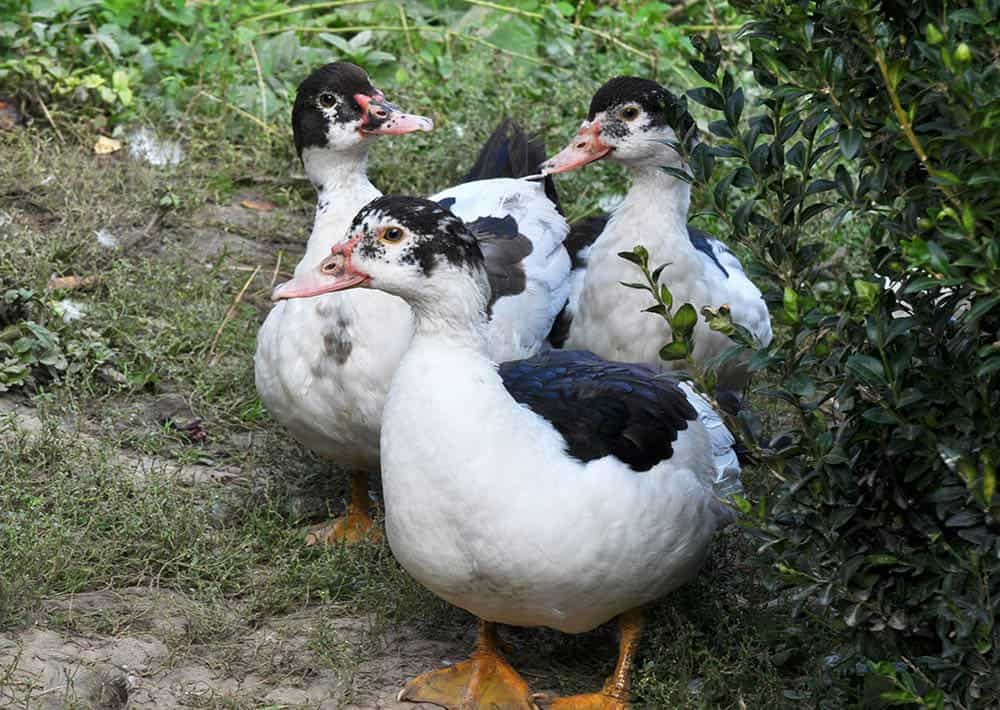
Another Australian native, the Musk Duck is called thus for the odor it emits during breeding season that is particularly musky.
59. Northern Pintail
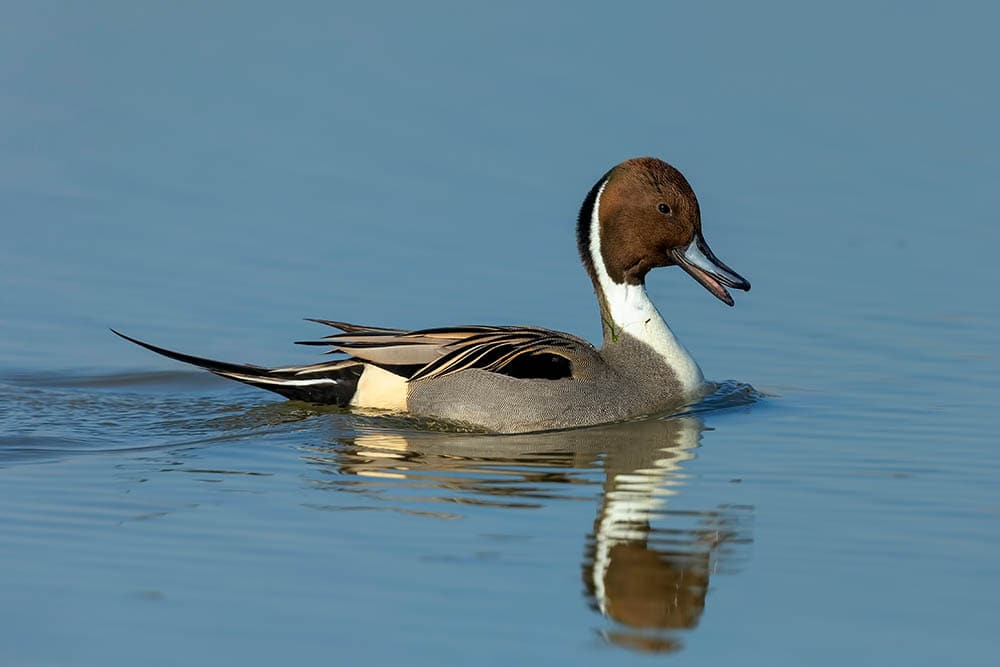
Found in North America and northern parts of Europe, this duck derives its name from its tail’s long, centrally located feathers. In seasons outside of breeding, they will form large flocks with other breeds.
60. Northern Shoveler
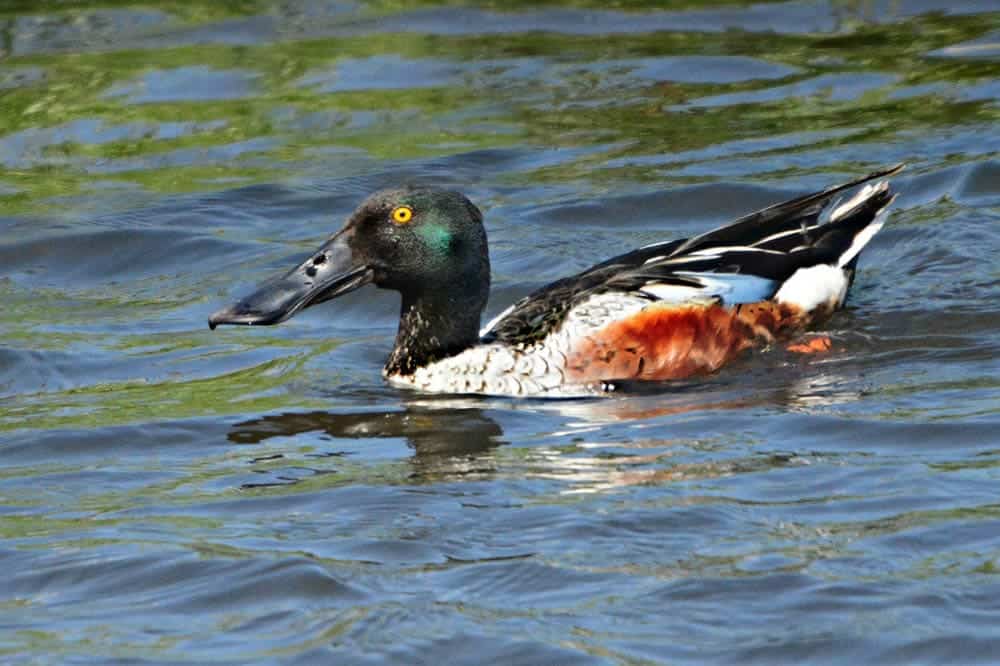
Quite common in Europe and North America, this duck was first officially described in System Naturae in 1758.
61. Pacific Black Duck
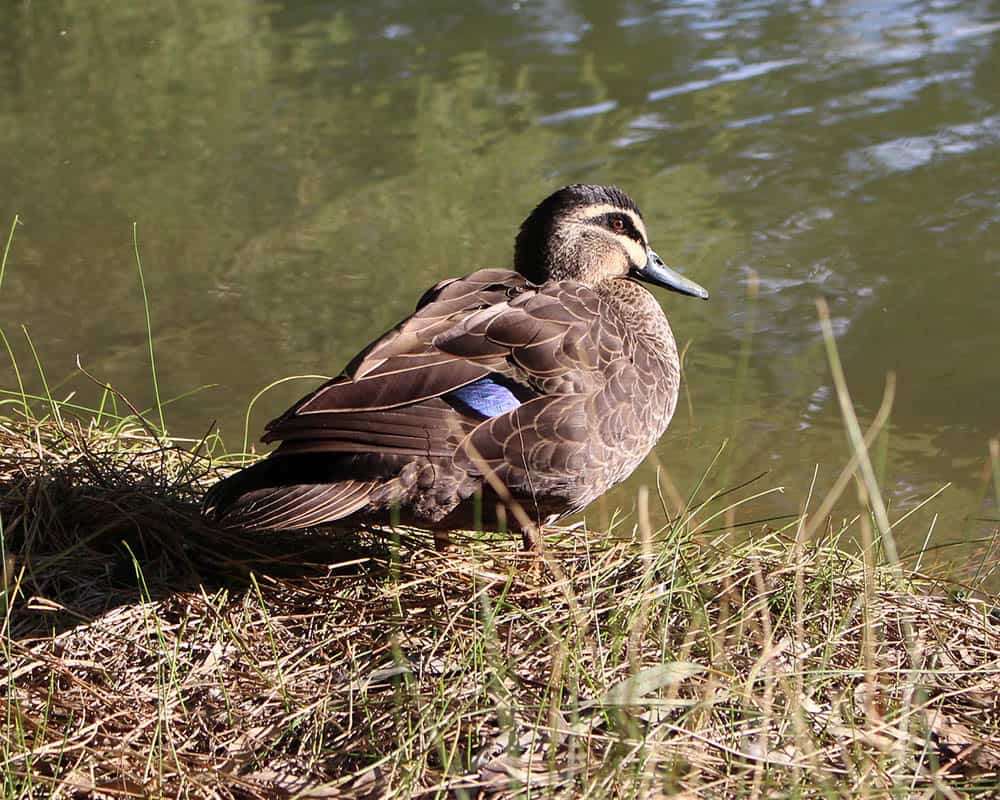
The Pacific Black Duck, or PBD, is quite a social creature. It is related to the American Black Duck and the Mallard.
62. Pink-Eared Duck
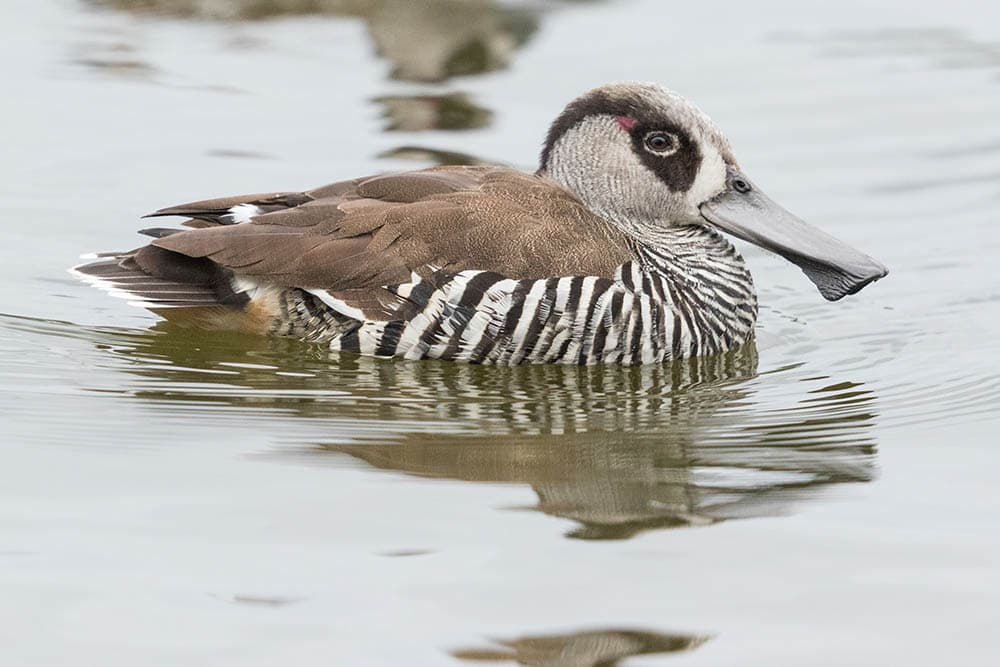
This Australian duck doesn’t have pink ears, so much as pink spots on the head. Unfortunately, you’ll only see these spots from super close up.
63. Red Shoveler
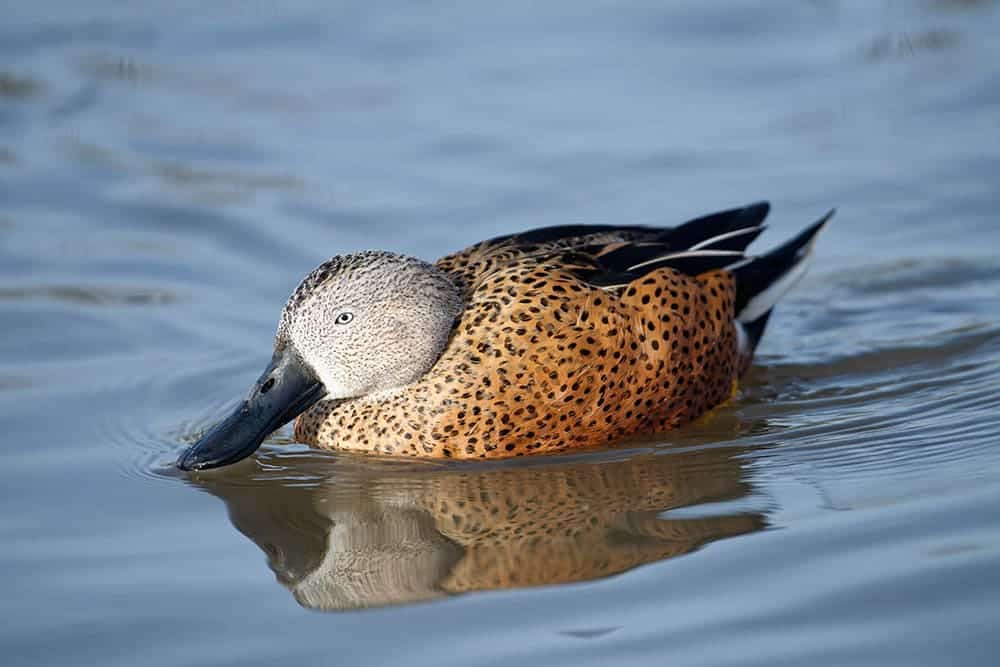
This South American dabbling duck is easy to spot due to its bill shaped similarly to a shovel and the light blue patches on the forewing. Unlike other dabbling duck breeds, this one is known to be very quiet.
64. Red-Crested Pochard
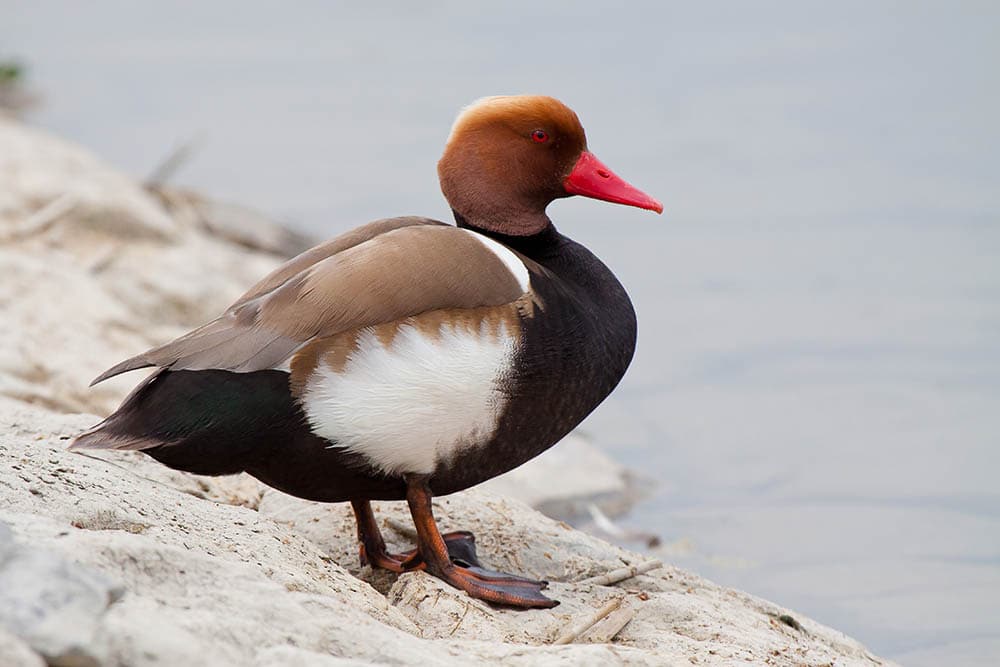
There’s no way you won’t recognize the male Red-Crested Pochard with its red bill and rusty head coloring. You’ll find this big diving duck in a host of locations, including southern Europe, Central Asia, the Black Sea, and even Africa.
65. Redhead
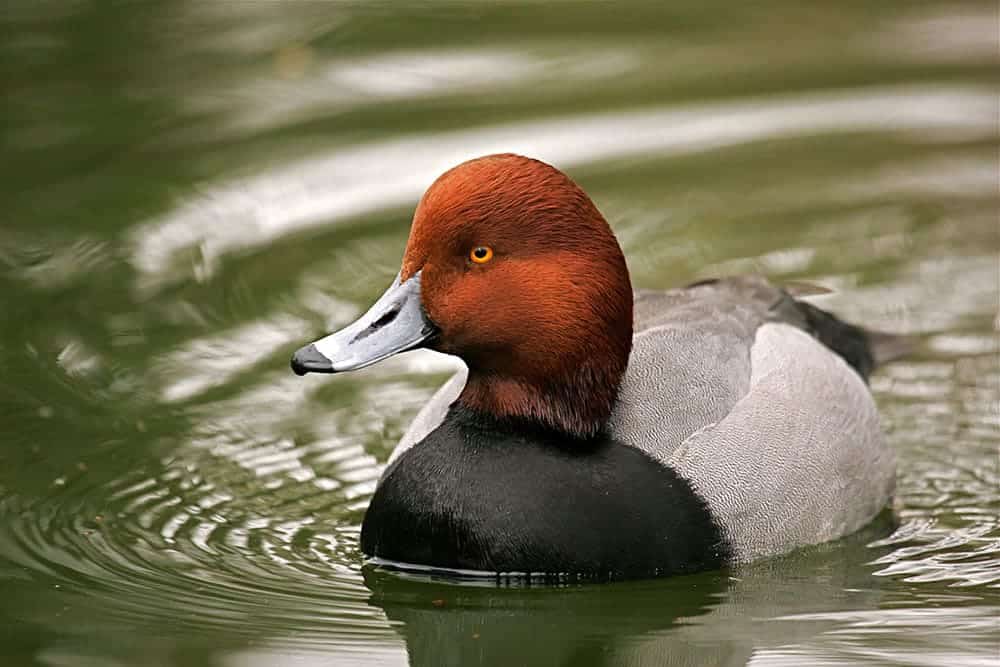
This diving duck also referred to as the Red-Headed Duck or the Red-Headed Pochard, is a sister to the Canvasback. They have difficulty walking on land because their legs are so far back on their body.
66. Ring-Necked Duck

A North American duck found most often in ponds and lakes carrying freshwater, this duck is named for the cinnamon-colored ring around the male’s neck. Interestingly, it’s quite hard to actually see that ring, so you can’t identify them by that.
67. Ringed Teal

These small ducks found in the forests of South America remain colorful year-round. Females have a call that sounds much like a cat’s meow!
68. Rosy-Billed Pochard

Though it is classified as a diving duck, the way the Rosy-Billed Pochard feeds is more similar to a dabbling duck. These ducks are used in a variety of ways, including for their meat and as pets.
Related Read: 8 Black Duck Breeds (With Pictures)
69. Ruddy Duck

A stiff-tailed duck from North America, the Ruddy Duck was introduced to the United Kingdom in 1948. Because the population there grew so much, and these ducks tried mating with an endangered duck breed, they became considered invasive, and attempts were made to lower the population.
70. Salvadori’s Teal
First described in 1894, this New Guinea duck can be found in mountain streams and alpine lakes. They are fairly agile at leaping onto rocks.
71. Silver Teal

These South American ducks tend to be very laid-back, but if you mess with their ducklings, eggs, or female ducks, you’ll find one uber-protective duck on your hands!
72. Southern Pochard
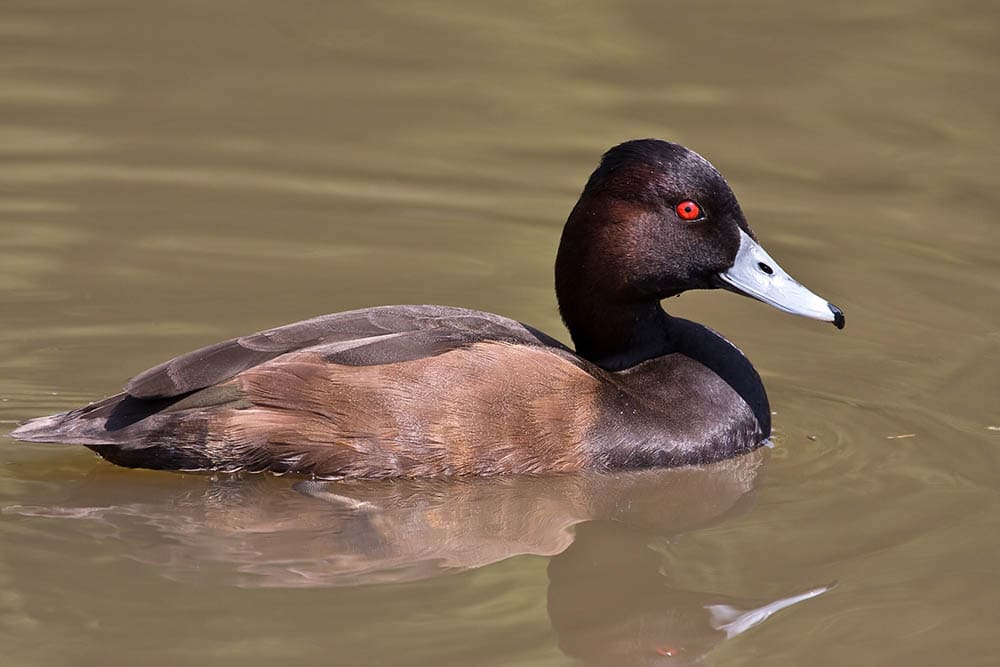
You’ll find the Southern Pochard in both South America and Africa. Males have red eyes.
73. Spectacled Duck
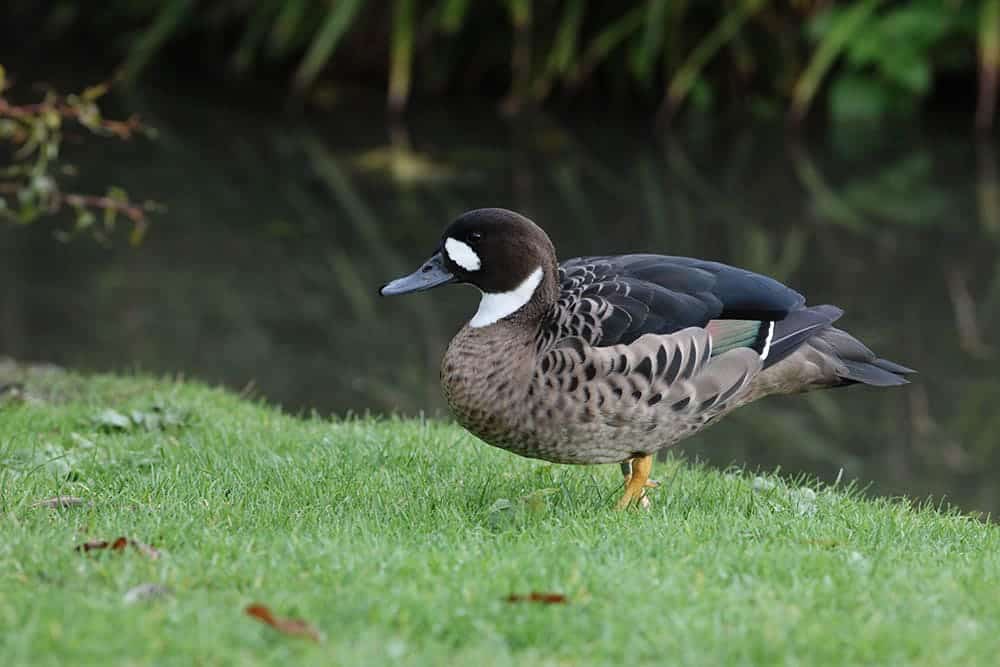
Also known as the Bronze-Winged Duck, this dabbling duck is found in South America. It is also sometimes referred to as “Dog-Duck” because the call of the female is a harsh bark.
74. Spotted Whistling-Duck
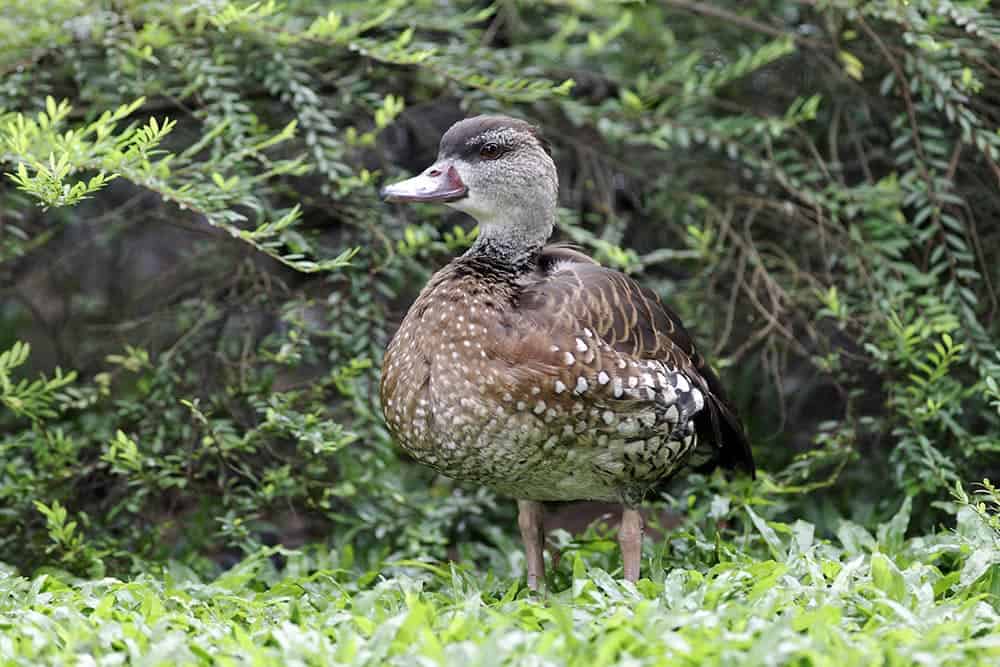
Also called the Spotted Tree Duck, you’ll find this duck in the Philippines, New Guinea, and Indonesia. This duck breed is not hunted often, but you can sometimes find it in captivity.
75. Steller’s Eider

This Arctic duck breed is the fastest, tiniest, and rarest of the Eider breeds. Inupiat Eskimos call the Steller’s Eider the “bird that sat in the campfire” because of the burnt color of the male’s belly.
76. Sunda Teal

This Indonesian duck is also known as Itik Benjut or Bebek Cokelat. It is a sister bird to the Chestnut Teal.
77. Surf Scoter

The Surf Scooter is a North American sea duck. The first description came in 1750 when the English naturalist George Edwards included it in A Natural History of Uncommon Birds.
78. Torrent Duck
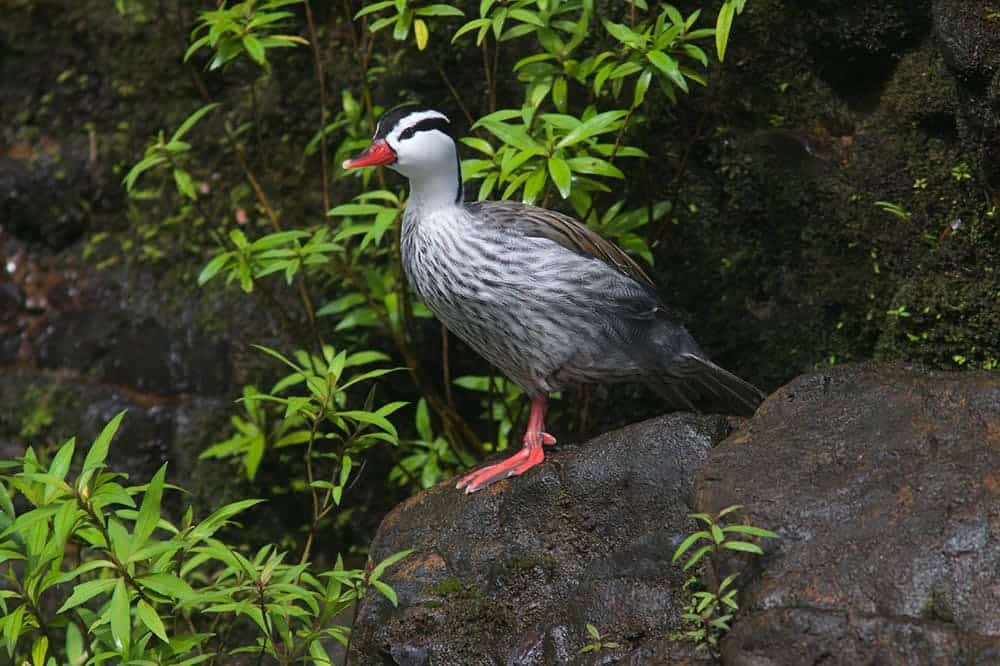
A resident of the Andes, the Torrent Duck populations have been declining in recent years. It is fabulous at swimming but hates flying.
79. Tufted Duck
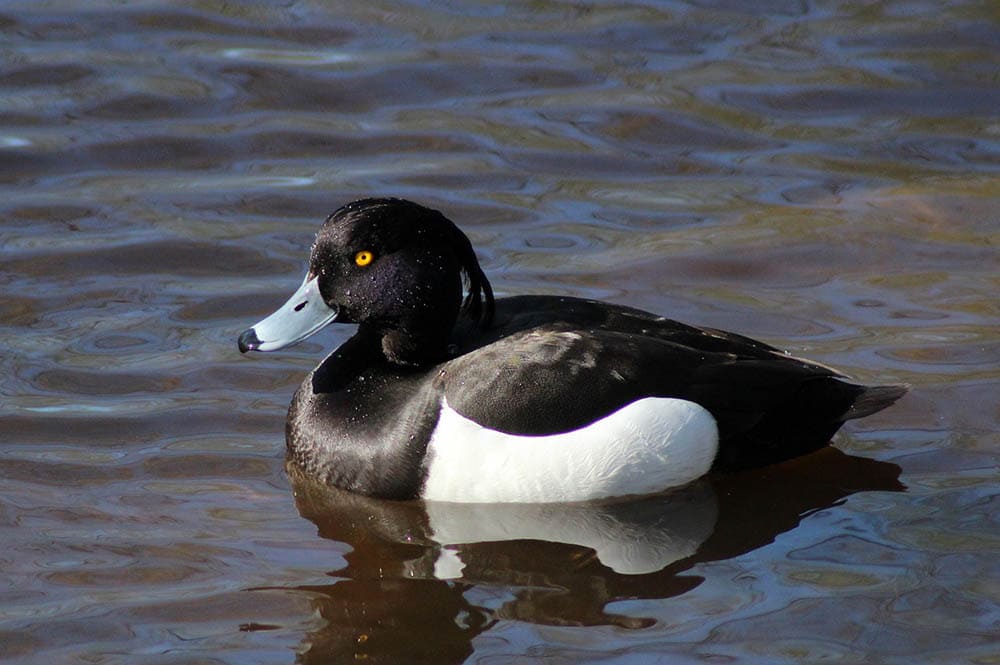
The Tufted Duck has a population of approximately one million in its native Eurasia. Sometimes, they find their way to North America, though they are considered rare in all places except for western Alaska.
80. Velvet Scoter
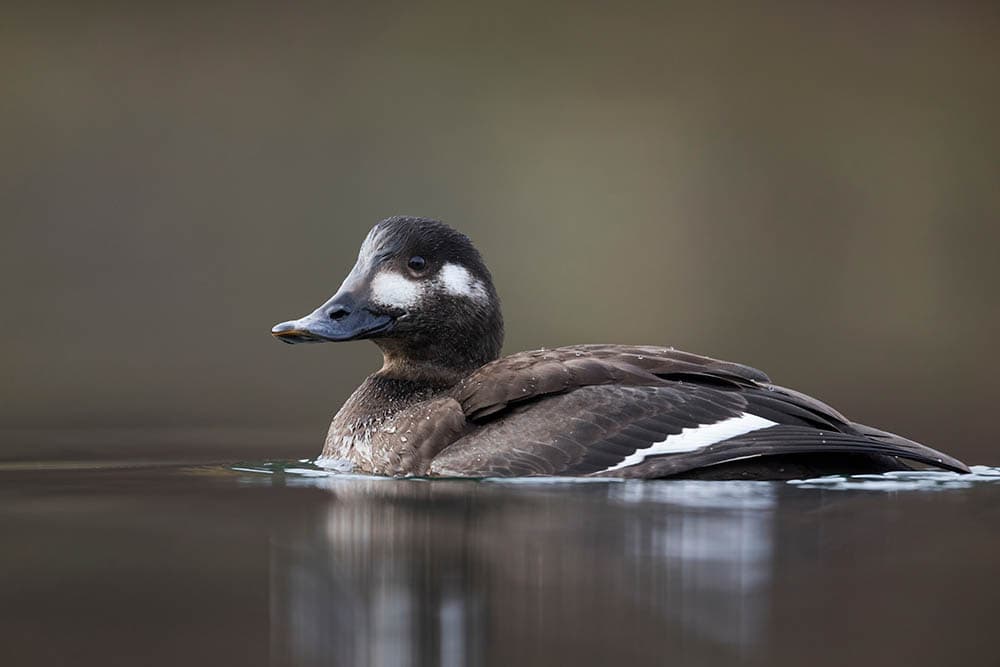
Also known as just Velvet Duck, this Scoter can be found in the northern parts of Europe. Males are entirely black except for some white around the eyes and a white patch on the wings.
81. White-Backed Duck
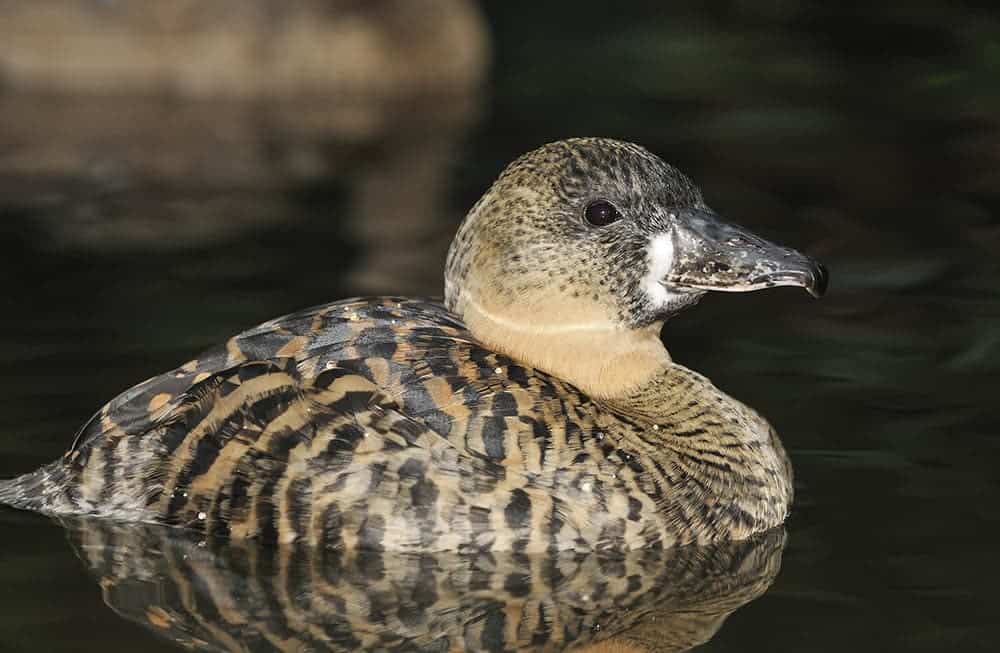
This duck is most closely related to the Whistling Duck. They can stay under water for up to half a minute!
82. White-Cheeked Pintail

Also known as the Summer Duck or Bahama Duck, this is another breed whose first official description came in System Naturae.
83. White-Winged Duck
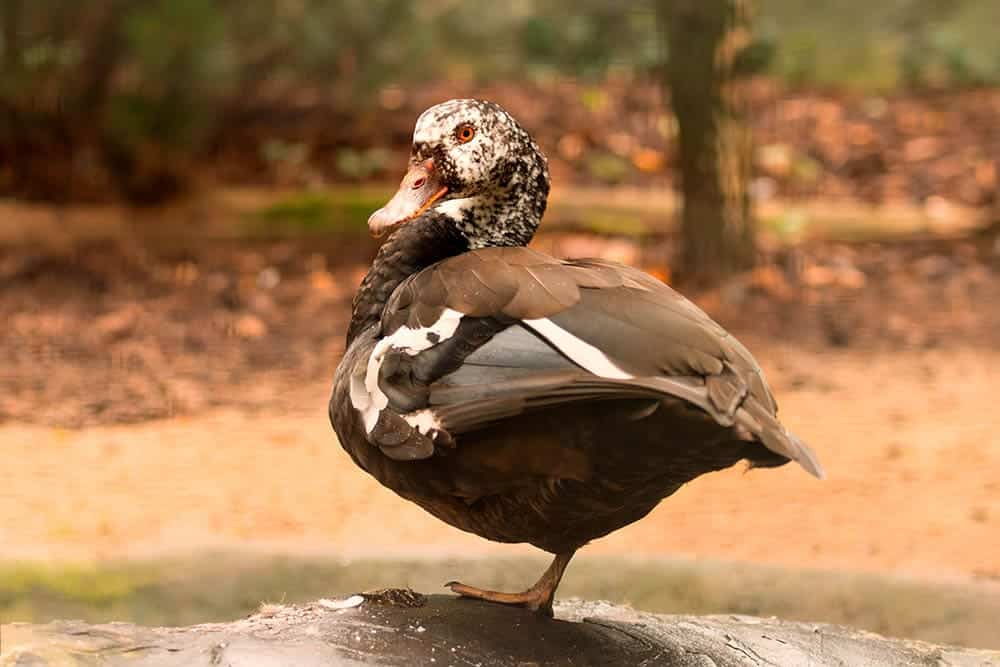
Also known as the White-Winged Wood Duck, this breed is one of the largest ducks around, second only to Steamer Ducks or the Muscovy. They only feed at night.
84. Wood Duck
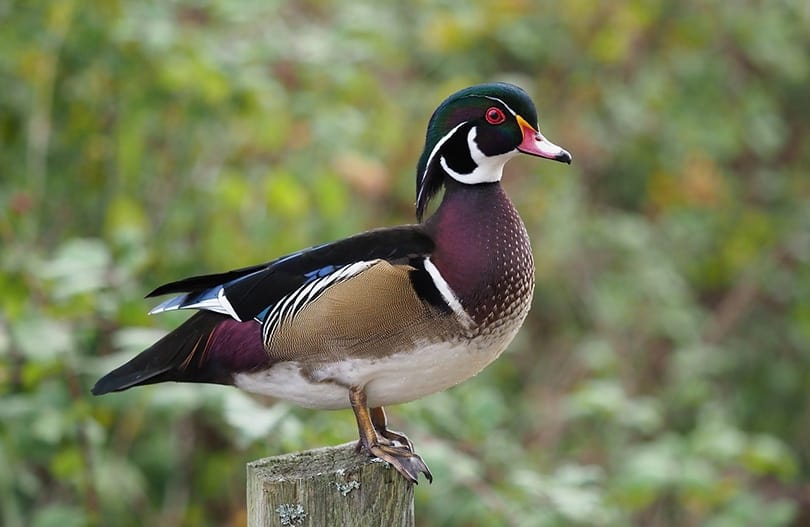
This perching duck is also known as the Carolina Duck. The male is one of the most colorful waterfowl in North America.
85. Yellow-Billed Pintail

This dabbling duck from South America is named for its bright yellow bill. It looks quite similar to the Yellow-Billed Teal, but the Pintail is larger.
86. Yellow-Billed Teal
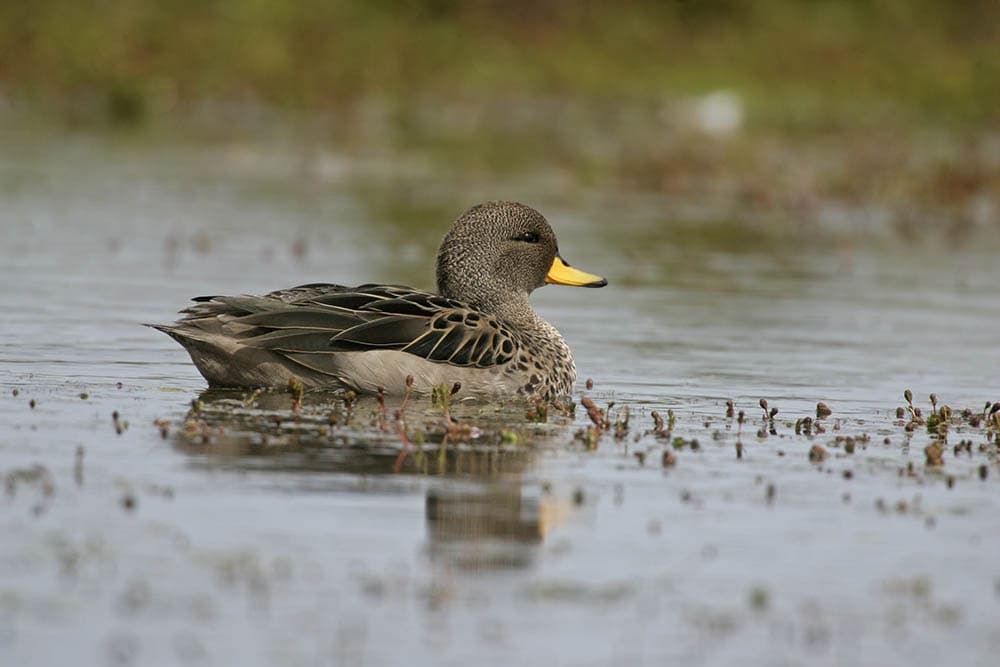
This duck lives primarily in South America, but as of 1971, you can find it on the island of South Georgia. You’ll find these ducks to be quite friendly and very quiet.

Final Thoughts
Now you know that there is a plethora of duck breeds throughout the world! All of them are unique, and many are downright lovely and colorful. Pick your favorite one and go find out more about them!
Featured Image Credit: Pixabay
